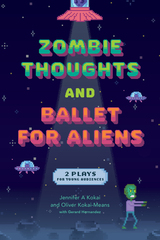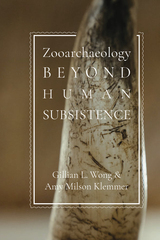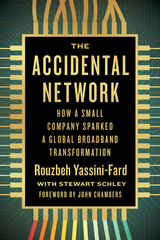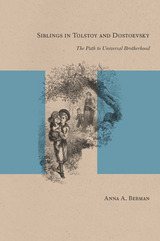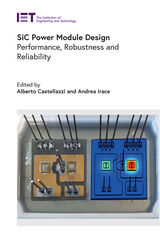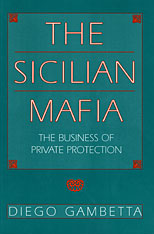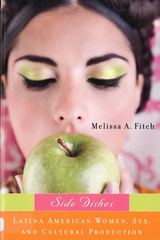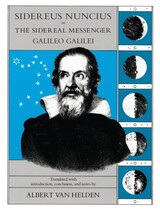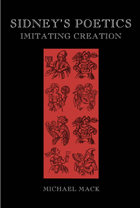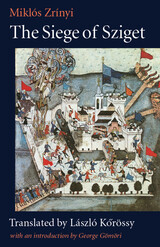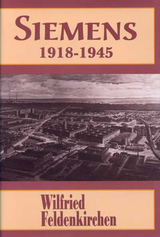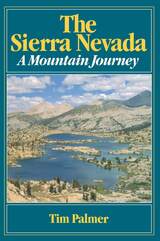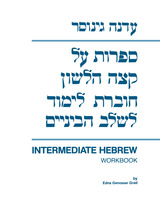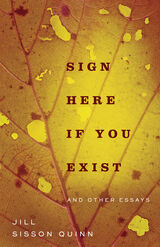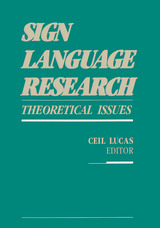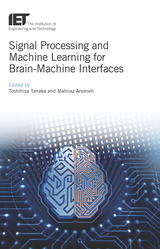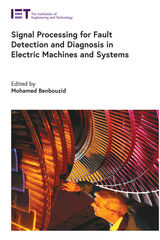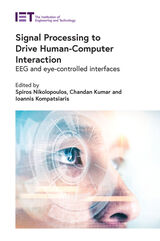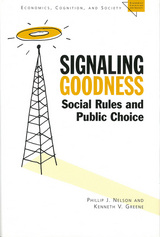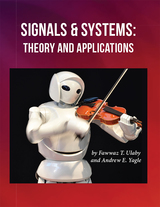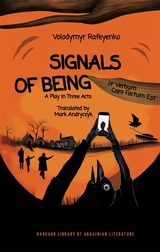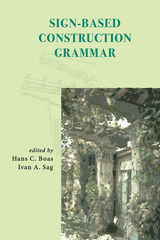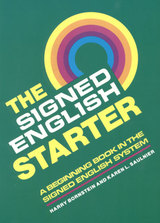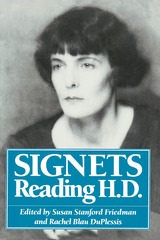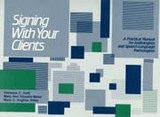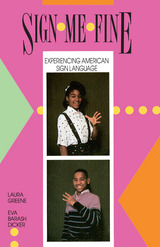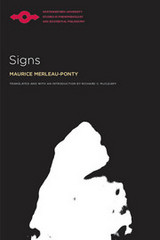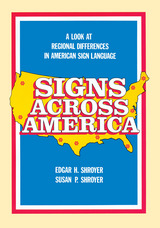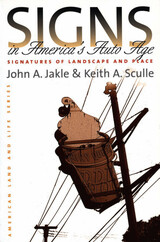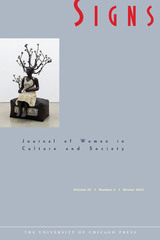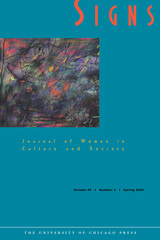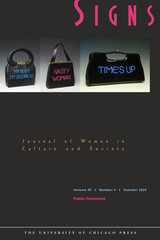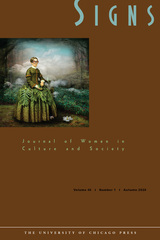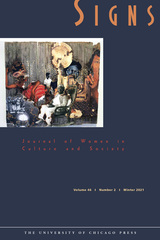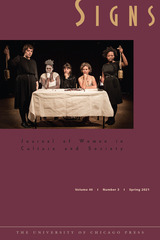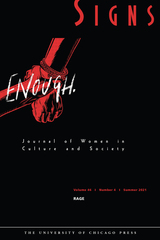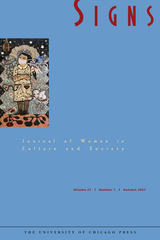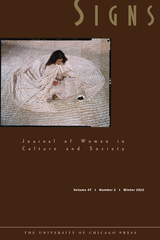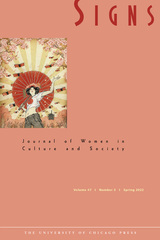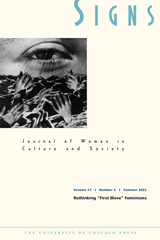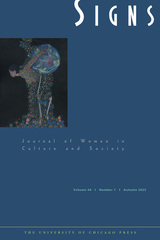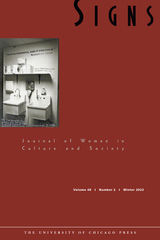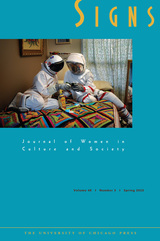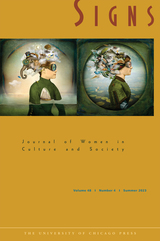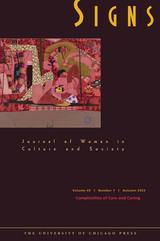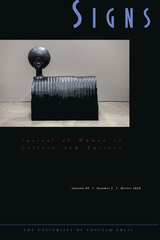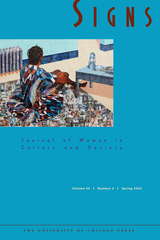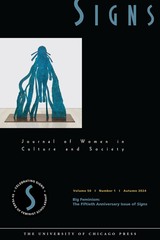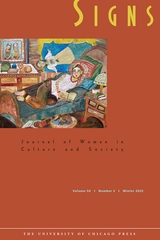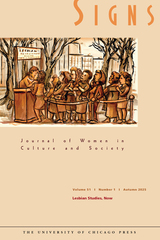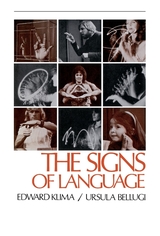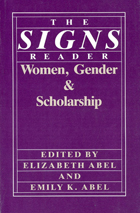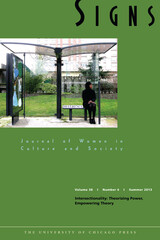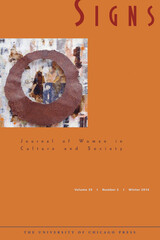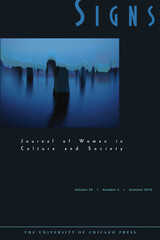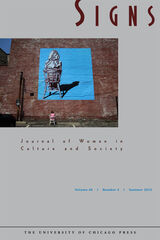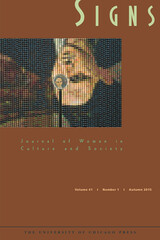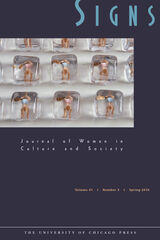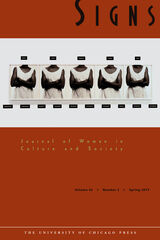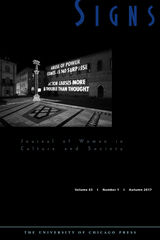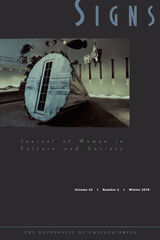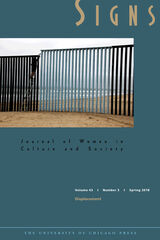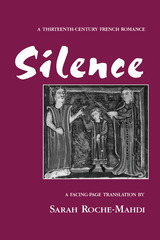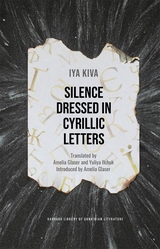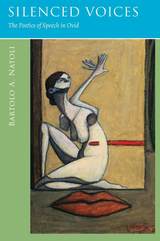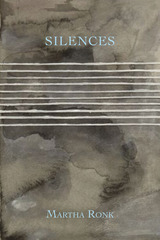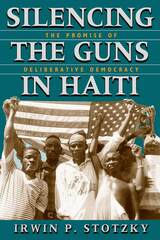 Siaya: The Historical Anthropology of an African Landscape
David William Cohen
Ohio University Press, 1989 The authors of this highly original book set out to remove the persistent boundary between the authors and readers of ethnography on one hand and the subjects of ethnography on the other – those who observe and those who are observed. The authors use stories to reveal Siaya, the Luo-speaking area of Western Kenya down near the Lake but still surprisingly vulnerable to drought. There are the stories of survival by a woman with her carpenter husband in Nairobi, there is the launching of a boat as bride into the Lake and there is the great Boro Christmas disco riot. The book finishes with an Afterword on the burial of the lawyer S. M. Otiono that divided its whole of Kenya. It is both written about and for the Luo. It brings together Luo ideas and debates about their own past and present with findings, arguments and questions produced about this “other people;” by outside scholars writing in their own disciplines. Among the Luo, what constitutes culture, what is correct behavior, what is history, are questions that are heavily fought over. This is one of those rare books that makes students and other interested individuals question their own cultural preconceptions and what are the genuine concerns of academic disciplines.
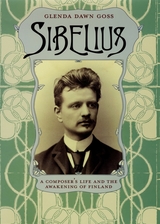 Sibelius: A Composer's Life and the Awakening of Finland
Glenda Dawn Goss
University of Chicago Press, 2009 One of the twentieth century’s greatest composers, Jean Sibelius (1865–1957) virtually stopped writing music during the last thirty years of his life. Recasting his mysterious musical silence and his undeniably influential life against the backdrop of Finland’s national awakening, Sibelius will be the definitive biography of this creative legend for many years to come. Glenda Dawn Goss begins her sweeping narrative in the Finland of Sibelius’s youth, which remained under Russian control for the first five decades of his life. Focusing on previously unexamined events, Goss explores the composer’s formative experiences as a Russian subject and a member of the Swedish-speaking Finnish minority. She goes on to trace Sibelius’s relationships with his creative contemporaries, with whom he worked to usher in a golden age of music and art that would endow Finns with a sense of pride in their heritage and encourage their hopes for the possibilities of nationhood. Skillfully evoking this artistic climate—in which Sibelius emerged as a leader—Goss creates a dazzling portrait of the painting, sculpture, literature, and music it inspired. To solve the deepest riddles of Sibelius’s life, work, and enigmatic silence, Goss contends, we must understand the awakening in which he played so great a role. Situating this national creative tide in the context of Nordic and European cultural currents, Sibelius dramatically deepens our knowledge of a misunderstood musical giant and an important chapter in the intellectual history of Europe.
Siberia, Siberia
Valentin Rasputin
Northwestern University Press, 1997 Valentin Rasputin—one of the most gifted and influential Russian prose writers of the past thirty years—offers a sweeping account of and penetrating reflection on the Russians' four hundred years of experience in Siberia. Beginning with Yermak, whose Cossacks crossed into Siberia in the 1580s, through the rapid Russian exploration, conquest, and colonialization, to today, Rasputin reveals the peculiarities of the Siberians, studying the gap between dreams and reality that has plagued Russians in Siberia for centuries.
Siberian Journey: Down the Amur to the Pacific, 1856–1857
Perry McDonough Collins
University of Wisconsin Press, 2011 Perry McDonough Collins was the first American to journey through Siberia and down the 2,690-mile Amur River to the Pacific Ocean. In 1860 he wrote A Voyage Down the Amoor, an account of his adventures, and his book proved so popular that it was reissued in 1864. Siberian Journey consists of Collins’s original text framed by an interpretive introduction and explanatory notes by Charles Vevier, providing an extensive, first-hand account of Russia’s land and its people in the mid–nineteenth century.
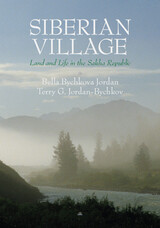 Siberian Village: Land and Life in the Sakha Republic
Bella Bychkova Jordan
University of Minnesota Press, 2001 A fascinating portrait of the history and landscape of this remote settlement. The village of Djarkhan is in the heart of Russia’s Sakha Republic, on the Central Yakut Plain. The world around Djarkhan, with its extreme subarctic climate and intractable permafrost, seems an unlikely place to look for a rich, historic, and exotic efflorescence of human life, and yet this is precisely what the authors found. Their book is a remarkable account of how the people of Djarkhan have created their own distinctive place through their unique relationship with a severe and demanding land. This book traces the way of life of the village’s Turkic inhabitants, the Yakuts, from their arrival in the 1600s through czarist times and the Soviet era to the present day. As a native of the village, geographer Bella Bychkova Jordan enjoyed unparalleled access to its people and their stories, myths, humor, problems, and folklore. Viewed through the prism of cultural geography, this material forms the basis of a remarkable portrait of a people wresting a living from the land in one of the coldest and most isolated spots on Earth. Published in collaboration with the Center for American Places.
Siblings in Tolstoy and Dostoevsky: The Path to Universal Brotherhood
Anna A. Berman
Northwestern University Press, 2015 Anna A. Berman’s book brings to light the significance of sibling relationships in the writings of Tolstoy and Dostoevsky. Relationships in their works have typically been studied through the lens of erotic love in the former, and intergenerational conflict in the latter. In close readings of their major novels, Berman shows how both writers portray sibling relationships as a stabilizing force that counters the unpredictable, often destructive elements of romantic entanglements and the hierarchical structure of generations. Power and interconnectedness are cast in a new light. Berman persuasively argues that both authors gradually come to consider siblinghood a model of all human relations, discerning a career arc in each that moves from the dynamics within families to a much broader vision of universal brotherhood.
 Siblings: Love, Envy, and Understanding
Judy Dunn and Carol Kendrick
Harvard University Press, 1982 The birth of a younger sibling can be a traumatic event for the older child. Unquestionably it places increased demands on parents and causes important changes in the inner balance of the family. Childrearing manuals are full of advice about how to get through this difficult time. But until now such advice has been based more on clinical guesswork than on direct observation of what really happens to families when a sibling is born.
With the arrival of Siblings, this gap in our knowledge is admirably filled. Judy Dunn and Carol Kendrick studied forty families for a period of approximately one year starting shortly before the birth of a second child. Some families, they found, weather the storm much better than others, and their book examines the full catalog of factors that can make the difference. There are, for instance, parenting styles that ease the impact on the older child, improve relations between siblings, and generally make life easier for the entire family. But there are also differences among children in such characteristics as sex, age, and temperament, all of which have a major influence totally beyond parental control.
Despite the undeniable stress involved, Dunn and Kendrick demonstrate that the advent of a sibling can be a stimulus for real cognitive and emotional growth on the part of the older child. No longer "the baby," the child must try to deal with a newcomer whose attempts to communicate are necessarily rudimentary. Siblings shows how the elder child's efforts to understand the baby can form the basis for a loving bond of extraordinary durability.
A sensitive and informative book, Siblings takes psychology into an area of family life and child development that has long received too little attention.
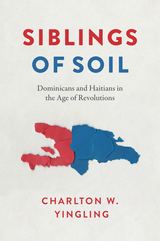 Siblings of Soil: Dominicans and Haitians in the Age of Revolutions
Charlton W. Yingling
University of Texas Press, 2022 2023 Honorable Mention, Isis Duarte Book Prize, Haiti/ Dominican Republic section (LASA)
After revolutionary cooperation between Dominican and Haitian majorities produced independence across Hispaniola, Dominican elites crafted negative myths about this era that contributed to anti-Haitianism.
Despite the island’s long-simmering tensions, Dominicans and Haitians once unified Hispaniola. Based on research from over two dozen archives in multiple countries, Siblings of Soil presents the overlooked history of their shared imperial endings and national beginnings from the 1780s to 1822. Haitian revolutionaries both inspired and aided Dominican antislavery and anti-imperial movements. Ultimately, Santo Domingo's independence from Spain came in 1822 through unification with Haiti, as Dominicans embraced citizenship and emancipation. Their collaboration resulted in one of the most unique and inclusive forms of independence in the Americas. Elite reactions to this era formed anti-Haitian narratives. Racial ideas permeated the revolution, Vodou, Catholicism, secularism, and even Deism. Some Dominicans reinforced Hispanic and Catholic traditions and cast Haitians as violent heretics who had invaded Dominican society, undermining the innovative, multicultural state. Two centuries later, distortions of their shared past of kinship have enabled generations of anti-Haitian policies, assumptions of irreconcilable differences, and human rights abuses.
SiC Power Module Design: Performance, robustness and reliability
Alberto Castellazzi
The Institution of Engineering and Technology, 2022 High-frequency switching power semiconductor devices are at the heart of power electronic converters. To date, these devices have been dominated by the well-established silicon (Si) technology. However, their intrinsic physical limits are becoming a barrier to achieving higher performance power conversion. Wide Bandgap (WBG) semiconductor devices offer the potential for higher efficiency, smaller size, lighter weight, and/or longer lifetime. Applications in power grid electronics as well as in electromobility are on the rise, but a number of technological bottle-necks need to be overcome if applications are to become more widespread - particularly packaging.
The Sicilian Mafia: The Business of Private Protection
Diego Gambetta
Harvard University Press, 1993 In a society where trust is in short supply and democracy weak, the Mafia sells protection, a guarantee of safe conduct for parties to commercial transactions. Drawing on the confessions of eight Mafiosi, Diego Gambetta develops an elegant analysis of the economic and political role of the Sicilian Mafia.
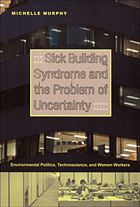 Sick Building Syndrome and the Problem of Uncertainty: Environmental Politics, Technoscience, and Women Workers
M. Murphy
Duke University Press, 2006 Before 1980, sick building syndrome did not exist. By the 1990s, it was among the most commonly investigated occupational health problems in the United States. Afflicted by headaches, rashes, and immune system disorders, office workers—mostly women—protested that their workplaces were filled with toxic hazards; yet federal investigators could detect no chemical cause. This richly detailed history tells the story of how sick building syndrome came into being: how indoor exposures to chemicals wafting from synthetic carpet, ink, adhesive, solvents, and so on became something that relatively privileged Americans worried over, felt, and ultimately sought to do something about. As M. Murphy shows, sick building syndrome provides a window into how environmental politics moved indoors. Sick building syndrome embodied a politics of uncertainty that continues to characterize contemporary American environmental debates. Murphy explores the production of uncertainty by juxtaposing multiple histories, each of which explains how an expert or lay tradition made chemical exposures perceptible or imperceptible, existent or nonexistent. They show how uncertainty emerged from a complex confluence of feminist activism, office worker protests, ventilation engineering, toxicology, popular epidemiology, corporate science, and ecology. In an illuminating case study, she reflects on EPA scientists’ efforts to have their headquarters recognized as a sick building. Murphy brings all of these histories together in what is not only a thorough account of an environmental health problem but also a much deeper exploration of the relationship between history, materiality, and uncertainty.
 Sick Planet: Corporate Food and Medicine
Stan Cox
Pluto Press, 2008 Neoliberals often point to improvements in public health and nutrition as examples of globalisation's success, but this book argues that the corporate food and medicine industries are destroying environments and ruining living conditions across the world.
Scientist Stan Cox expertly draws out the strong link between Western big business and environmental destruction. This is a shocking account of the huge damage that drug manufacturers and large food corporations are inflicting on the health of people and crops worldwide. Companies discussed include Wal-Mart, GlaxoSmithKline, Tyson Foods and Monsanto. On issues ranging from the poisoning of water supplies in South Asia to natural gas depletion and how it threatens global food supplies, Cox shows how the demand for profits is always put above the public interest.
While individual efforts to "shop for a better world" and conserve energy are laudable, Cox explains that they need to be accompanied by an economic system that is grounded in ecological sustainability if we are to find a cure for our Sick Planet.
 Sick to Death: An Andy Hayes Mystery
Andrew Welsh-Huggins
Ohio University Press, 2024 After years of personal and professional turmoil, things are finally looking up for Columbus, Ohio, private eye Andy Hayes. As Sick to Death opens, Andy is relishing his new gig: a drama-free, family-friendly stint as a guard at the Columbus Museum of Art. What could be better than regular hours, a steady paycheck, and an attractive coworker who may be just as interested in him as he is in her? Right on schedule, Andy’s newfound equilibrium comes crashing down when he interrupts the theft of a painting by famed Ashcan school realist George Bellows—and is promptly fired for breaking museum protocols. Helping him thwart the robbers is a young woman whom Andy has caught staring at him several times at the museum. To his shock, she reveals she’s an adult daughter he never knew he had, the result of a one-night stand during his misspent youth a quarter century earlier. But Alex Rutledge, about to enter the Columbus Police Academy, isn’t looking for family time. She wants to hire her newly discovered father to find the driver who killed her mother, Kate, five months earlier in a still unsolved hit-skip accident. Even as Andy reels from this personal development, he uncovers troubling details about Kate’s death that increasingly point toward murder and an angry anti-vax sentiment roiling below the surface at the hospital where she worked. Complicating Andy’s case, he finds himself in the crosshairs of an FBI investigation into the attempted art theft. With time running out and his and Alex’s lives on the line, Andy rushes to defend his reputation as a private eye and find Kate’s killer.
 Sickening: Anti-Black Racism and Health Disparities in the United States
Anne Pollock
University of Minnesota Press, 2021 An event-by-event look at how institutionalized racism harms the health of African Americans in the twenty-first century
A crucial component of anti-Black racism is the unconscionable disparity in health outcomes between Black and white Americans. Sickening examines this institutionalized inequality through dramatic, concrete events from the past two decades, revealing how unequal living conditions and inadequate medical care have become routine. From the spike in chronic disease after Hurricane Katrina to the lack of protection for Black residents during the Flint water crisis—and even the life-threatening childbirth experience for tennis star Serena Williams—author Anne Pollock takes readers on a journey through the diversity of anti-Black racism operating in healthcare. She goes beneath the surface to deconstruct the structures that make these events possible, including mass incarceration, police brutality, and the hypervisibility of Black athletes’ bodies. Ultimately, Sickening shows what these shocking events reveal about the everyday racialization of health in the United States. Concluding with a vital examination of racialized healthcare during the COVID pandemic and the Black Lives Matter rebellions of 2020, Sickening cuts through the mind-numbing statistics to vividly portray healthcare inequalities. In a gripping and passionate style, Pollock shows the devastating reality and consequences of systemic racism on the lives and health of Black Americans.
 The Sickled Cell: From Myths to Molecules
Stuart J. Edelstein
Harvard University Press, 1986 Each year one in four hundred births among black Americans is a baby with sickle cell anemia and a life expectancy of only twenty years. Fifty thousand Americans of all ages suffer from the disease, yet there is no treatment for the sickling of cells. This book is the first attempt to summarize all that we know about the historical and cultural roots of sickle cell anemia and the molecular details of how it attacks humans.
The discovery of the molecular basis of sickle cell disease is a riveting story that encapsulates many of the major events in the history of molecular biology. We now know that sickling is triggered by a mutation that alters hemoglobin molecules of the red blood cells. The high incidence of individuals of African descent with this mutation is linked to the slight resistance to malaria provided by the mutant hemoglobin.
But this volume tells more than the story of a disease. Stuart Edelstein recounts his personal experiences in Africa, where he conducted fieldwork among the Igbo of Nigeria. There he explored a possible relation between sickle cell anemia and the Igbo belief in ogbanje, the “repeater children” who are born, die young, and are reborn to the same parents. Sickling cells and “water in the blood,” as traditional healers describe the anemia, are implicated in the amputation of the end of the left little finger as part of a ritual to induce the ogbanje child to “stay.”
From such fascinating myths and practices the author proceeds to examine the evolutionary stages of the hemoglobin molecule in primates and how cells can become distorted into sickle shapes. These molecular aspects of the anemia provide the background for considering the latest efforts to diagnose and treat it. Although genetic engineering techniques may someday cure the disease, most current efforts are directed at developing antisickling drugs to modify the hemoglobin molecules. This engaging yet scholarly book blends cultural anthropology, linguistics, genetics, biochemistry, and medicine into a multifaceted look at a disease by a world-renowned expert on hemoglobin.
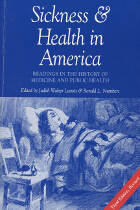 Sickness and Health in America: Readings in the History of Medicine and Public Health
Edited by Judith W. Leavitt and Ronald L. Numbers
University of Wisconsin Press, 1997 An invaluable resource for students, scholars, and general readers, this highly regarded and widely used social history of medicine and public health in the United States is now available in a third edition. Extensively revised and updated, it includes twenty-one new essays; graphs illustrating the rise in deaths caused by HIV, homicide, and suicide; and a greatly expanded Guide to Further Reading. Entirely new sections on Sickness and Health, Early American Medicine, Therapeutics, the Art of Medicine, and Public Health and Personal Hygiene have been added, supplementing updated sections on the Science of Medicine, Education, the Allied Health Professions, Image and Income, Institutions, Race and Medicine, Epidemics, Public Health Reform, and Public Health and Medical Theory. An introductory essay and a series of historical photographs complement the articles.
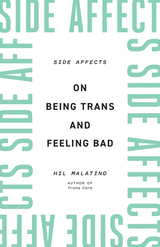 Side Affects: On Being Trans and Feeling Bad
Hil Malatino
University of Minnesota Press, 2022 How the “bad feelings” of trans experience inform trans survival and flourishing
Some days—or weeks, or months, or even years—being trans feels bad. Yet as Hil Malatino points out, there is little space for trans people to think through, let alone speak of, these bad feelings. Negative emotions are suspect because they unsettle narratives of acceptance or reinforce virulently phobic framings of trans as inauthentic and threatening. In Side Affects, Malatino opens a new conversation about trans experience that acknowledges the reality of feeling fatigue, envy, burnout, numbness, and rage amid the ongoing onslaught of casual and structural transphobia in order to map the intricate emotional terrain of trans survival. Trans structures of feeling are frequently coded as negative on both sides of transition. Before transition, narratives are framed in terms of childhood trauma and being in the “wrong body.” Posttransition, trans individuals—especially trans people of color—are subject to unrelenting transantagonism. Yet trans individuals are discouraged from displaying or admitting to despondency or despair. By moving these unloved feelings to the center of trans experience, Side Affects proposes an affective trans commons that exists outside political debates about inclusion. Acknowledging such powerful and elided feelings as anger and exhaustion, Malatino contends, is critical to motivating justice-oriented advocacy and organizing—and recalibrating new possibilities for survival and well-being.
Side Dishes: Latina American Women, Sex, and Cultural Production
Fitch, Melissa A
Rutgers University Press, 2009 Moving beyond the "main dishes" of traditional literary works, Side Dishes offers a provocative and delicious new understanding of Latin American women's authorship and activism. The book illuminates a wealth of creative and intellectual work by Latin American women—editors, directors, cartoonists, academics, performance artists, and comedians—and explores them in light of their treatment of women's sexuality.
Side Dishes considers feminist pornography and literary representations of masturbation, bisexuality, lesbianism, and sexual fantasies; the treatment of lust in stand-up comedy and science fiction; critical issues in leading feminist journals; and portrayals of sexuality in four contemporary Latin American films. Melissa A. Fitch concludes with a look at the rise of women's and gender studies programs in Latin America.
Side Dishes: Latina American Women, Sex, and Cultural Production
Fitch, Melissa A
Rutgers University Press, 2009 Moving beyond the "main dishes" of traditional literary works, Side Dishes offers a provocative and delicious new understanding of Latin American women's authorship and activism. The book illuminates a wealth of creative and intellectual work by Latin American women—editors, directors, cartoonists, academics, performance artists, and comedians—and explores them in light of their treatment of women's sexuality. Side Dishes considers feminist pornography and literary representations of masturbation, bisexuality, lesbianism, and sexual fantasies; the treatment of lust in stand-up comedy and science fiction; critical issues in leading feminist journals; and portrayals of sexuality in four contemporary Latin American films. Melissa A. Fitch concludes with a look at the rise of women's and gender studies programs in Latin America.
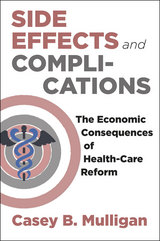 Side Effects and Complications: The Economic Consequences of Health-Care Reform
Casey B. Mulligan
University of Chicago Press, 2015 The Affordable Care Act will have a dangerous effect on the American economy. That may sound like a political stance, but it’s a conclusion directly borne out by economic forecasts. In Side Effects and Complications, preeminent labor economist Casey B. Mulligan brings to light the dire economic realities that have been lost in the ideological debate over the ACA, and he offers an eye-opening, accessible look at the price American citizens will pay because of it.
Looking specifically at the labor market, Mulligan reveals how the costs of health care under the ACA actually create implicit taxes on individuals, and how increased costs to employers will be passed on to their employees. Mulligan shows how, as a result, millions of workers will find themselves in a situation in which full-time work, adjusted for the expense of health care, will actually pay less than part-time work or even not working at all. Analyzing the incentives—or lack thereof—for people to earn more by working more, Mulligan offers projections on how many hours people will work and how productively they will work, as well as how much they will spend in general. Using the powerful tools of economics, he then illustrates the detrimental consequences on overall employment in the near future.
Drawing on extensive knowledge of the labor market and the economic theories at its foundation, Side Effects and Complications offers a crucial wake-up call about the risks the ACA poses for the economy. Plainly laying out the true costs of the ACA, Mulligan’s grounded and thorough predictions are something that workers and policy makers cannot afford to ignore.
 Sidebend World
Charles Harper Webb
University of Pittsburgh Press, 2018 With eleven full-length books and a spate of major prizes, Charles Harper Webb—once a well-kept secret in the poetry underground—has gained national recognition as a writer of poems that are complex yet reader-friendly. Sidebend World shows clearly why Webb has been called one of the most inventive, incisive, and psychologically astute poets writing in the U.S.A. today, as well as one of the most entertaining.
Webb is celebrated for his use of humor; yet even his funniest poems rise, as the best humor must, from serious concerns. Powered by an uncompromising but compassionate intelligence and an abiding wonder at the beautiful strangeness of the world, Sidebend World explores with clarity and vividness a wide range of emotions—love to hate, tenderness to brutality; yet, above all, Webb is a poet of praise. Metaphors of startling aptness and originality, a distinctive voice at once provocative and endearing, high musicality, propulsive energy, wild imaginative leaps, as well as mastery of diction from lyricism to street-speak, create a reading experience of the first order. These poems go down easy, but pack a wallop. As Robert Frost said poetry should do, Sidebend World "begins in delight and ends in wisdom."
Sidereus Nuncius, or The Sidereal Messenger
Galileo Galilei
University of Chicago Press, 1989 "This fine translation is a god-send. . . . Surely you want to read what Galileo wrote. If so buy this book. Van Helden's introduction is scholarly; no one knows more about Galileo's telescope; the translation is superb; Van Helden's review of the reception of the Sidereal Messenger is profound; the bibliography is extensive. What more can I say?"—David W. Hughes, The Observatory
"[Sidereus nunclus] has never before been made available in its entirety in a continuous form, with full notes and comment. The introduction, translation and notes by Van Helden are a splendid example of the best scholarship and fullest accessibility. . . . we can now truly get to grips with the phenomenon of Galileo and what his life and work should mean to us today."—Robert Temple, Nature
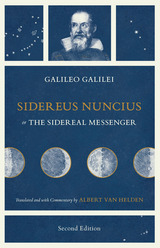 Sidereus Nuncius, or The Sidereal Messenger
Galileo Galilei
University of Chicago Press, 2015 Galileo Galilei’s Sidereus Nuncius is arguably the most dramatic scientific book ever published. It announced new and unexpected phenomena in the heavens, “unheard of through the ages,” revealed by a mysterious new instrument. Galileo had ingeniously improved the rudimentary “spyglasses” that appeared in Europe in 1608, and in the autumn of 1609 he pointed his new instrument at the sky, revealing astonishing sights: mountains on the moon, fixed stars invisible to the naked eye, individual stars in the Milky Way, and four moons around the planet Jupiter. These discoveries changed the terms of the debate between geocentric and heliocentric cosmology and helped ensure the eventual acceptance of the Copernican planetary system.
Albert Van Helden’s beautifully rendered and eminently readable translation is based on the Venice 1610 edition’s original Latin text. An introduction, conclusion, and copious notes place the book in its historical and intellectual context, and a new preface, written by Van Helden, highlights recent discoveries in the field, including the detection of a forged copy of Sidereus Nuncius, and new understandings about the political complexities of Galileo’s work.
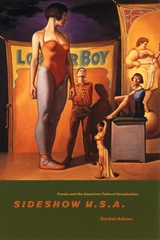 Sideshow U.S.A.: Freaks and the American Cultural Imagination
Rachel Adams
University of Chicago Press, 2001 A staple of American popular culture during the nineteenth and early twentieth centuries, the freak show seemed to vanish after the Second World War. But as Rachel Adams reveals in Sideshow U.S.A., images of the freak show, with its combination of the grotesque, the horrific, and the amusing, stubbornly reappeared in literature and the arts. Freak shows, she contends, have survived because of their capacity for reinvention. Empty of any inherent meaning, the freak's body becomes a stage for playing out some of the twentieth century's most pressing social and political concerns, from debates about race, empire, and immigration, to anxiety about gender, and controversies over taste and public standards of decency.
Sideshow U.S.A. begins by revisiting the terror and fascination the original freak shows provided for their audiences, as well as exploring the motivations of those who sought fame and profit in the business of human exhibition. With this history in mind, Adams turns from live entertainment to more mediated forms of cultural expression: the films of Tod Browning, the photography of Diane Arbus, the criticism of Leslie Fiedler, and the fiction Carson McCullers, Toni Morrison, and Katherine Dunn. Taken up in these works of art and literature, the freak serves as a metaphor for fundamental questions about self and other, identity and difference, and provides a window onto a once vital form of popular culture.
Adams's study concludes with a revealing look at the revival of the freak show as live performance in the late 1980s and the 1990s. Celebrated by some, the freak show's recent return is less welcome to those who have traditionally been its victims. At the beginning of a new century, Adams sees it as a form of living history, a testament to the vibrancy and inventiveness of American popular culture, as well as its capacity for cruelty and injustice.
"Because of its subject matter, this interesting and complex study is provocative, as well as thought-provoking."—Virginia Quarterly Review
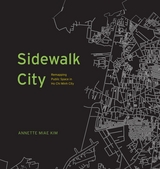 Sidewalk City: Remapping Public Space in Ho Chi Minh City
Annette Miae Kim
University of Chicago Press, 2015 For most, the term “public space” conjures up images of large, open areas: community centers for meetings and social events; the ancient Greek agora for political debates; green parks for festivals and recreation. In many of the world’s major cities, however, public spaces like these are not a part of the everyday lives of the public. Rather, business and social lives have always been conducted along main roads and sidewalks. With increasing urban growth and density, primarily from migration and immigration, rights to the sidewalk are being hotly contested among pedestrians, street vendors, property owners, tourists, and governments around the world.
With Sidewalk City, Annette Miae Kim provides the first multidisciplinary case study of sidewalks in a distinctive geographical area. She focuses on Ho Chi Minh City, Vietnam, a rapidly growing and evolving city that throughout its history, her multicultural residents have built up alternative legitimacies and norms about how the sidewalk should be used. Based on fieldwork over 15 years, Kim developed methods of spatial ethnography to overcome habitual seeing, and recorded both the spatial patterns and the social relations of how the city’s vibrant sidewalk life is practiced.
In Sidewalk City, she transforms this data into an imaginative array of maps, progressing through a primer of critical cartography, to unveil new insights about the importance and potential of this quotidian public space. This richly illustrated and fascinating study of Ho Chi Minh City’s sidewalks shows us that it is possible to have an aesthetic sidewalk life that is inclusive of multiple publics’ aspirations and livelihoods, particularly those of migrant vendors.
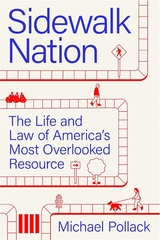 Sidewalk Nation: The Life and Law of America's Most Overlooked Resource
Michael Pollack
Harvard University Press An illuminating ramble along the American sidewalk: routinely unnoticed, yet central to daily life, neighborhood vitality, and significant legal controversies.
Public infrastructure is as essential to our communities as it is easily overlooked. A case in point is the humble sidewalk: constantly taken for granted, yet linked to nearly every pressing issue of local governance in urban, suburban, and even rural areas. From commerce, taxes, and property rights to policing, homelessness, and surveillance; from free speech and socioeconomic equity to public health and climate resilience—sidewalks, surprisingly, are at the core of numerous major debates.
Sidewalk Nation offers a vivid travelogue spanning more than a dozen cities and towns across the United States to show how diverse communities are grappling with big challenges. Some are prosaic, if critical: How do we ensure that sidewalks facilitate mobility for disabled people? Whose job is it to clear snow from public space? And some touch on the most profound issues in law, including our rights under the First and Fourth Amendments. While traversing the country, Michael Pollack provides expert insight into the property, tax, and zoning laws that shape sidewalk management and land use more broadly. Offering a holistic vision for improving a vital resource, Pollack argues for reforms to ensure that local governments have both the obligation and the funding needed to give due attention to sidewalks and all that they offer.
Whether elected officials, civil servants, engineers, developers, or voters, everyone has a stake in the question of where sidewalks should be placed and how they should be used. Indeed, as Sidewalk Nation makes clear, what’s under our feet should be at the front of our minds as we decide how to build, regulate, and protect our neighborhoods.
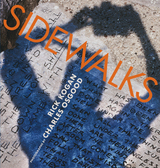 Sidewalks: Portraits of Chicago
Rick Kogan & Charles Osgood
Northwestern University Press, 2008 "A wonderful book that tells you the basic truths of our city." —Studs Terkel
Few people know Chicago as do Rick Kogan and Charles Osgood, and their "Sidewalks" column for the Chicago Tribune Sunday Magazine is a tour of the city like no other, taking readers to the off-beat and quintessential spots that give Chicago its character—that make its inhabitants feel at home and tell its visitors that they have arrived.
Accompanied by evocative color photographs by Charles Osgood, Kogan's pieces revisit the lost places and people of Chicago, and take readers down the quiet byways and thriving thoroughfares, pointing out the characters and cornerstones, the oddities and institutions that make the city what it is. In this collection you will find an elegy for Maxwell Street, the marketplace that pulsed with city life for more than 100 years; a remembrance of a disturbing advertisement ("Are you a slave to housework?") on the side of a building on Irving Park Road; a cross marking a deadly intersection; a magical miniature golf course; as well as ballad singer Fred Holstein, the denizens of the World Gym and memories of Bensinger's pool hall, the day-camp kids of summer, bike couriers, the creatures of the beach, and much, much more. Here is Chicago, past, present, and—let's hope—future, captured in the unique archive of Sidewalks.
 Sideways Developments: Queer and Trans Aesthetics of Global Hong Kong
Kai Hang Cheang
University of Michigan Press, 2026 Sideways Developments examines Hong Kong Anglophone and Cantophone literature and visual culture to trace the forms of queer and trans survival and flourishing in the Asian century. Contesting the cisgender, heterosexual, linear tropes that constitute developmentalist narratives deployed by superpowers—from colonial Britain to 20th-century America to a rising China—Cheang argues that sideways aesthetics define the narratives through which the LGBTQ+ community navigates personal and socioeconomic transitions. Through formalist analyses of a range of genres, Cheang reveals the affordances of queer and trans cultures for addressing the question of Hong Kong during its period of promised transition until 2047.
In this moment of multiple crises, Sideways Developments offers a timely hermeneutic and theory of solidarity and sustainability. The book tracks how sideways aesthetics have evolved from a feature of LGBTQ+ plots, performance, and nonlinear approaches to space-time to a form of togetherness that links postcolonial Hong Kong with struggles worldwide. Using what Cheang terms intersectional formalism as an analytical tool, the book provides a multilayered examination of the alternative pathways exemplified by queer and trans resilience and regeneration.
 Sideways Selves: Travesti and Jotería Struggles Across the Américas
PJ DiPietro
University of Texas Press, 2025 How trans and non-binary networks engage in decoloniality across hemispheres. A deeply informed, theoretically rich work of inquiry and critique, Sideways Selves learns from two communities of migrants as they contest their marginalization under the colonial regime of gender—colonial because, as PJ DiPietro affirms, Indigenous and Afro-diasporic conceptions of embodiment have been displaced by the European-Christian order of gender. Following gender-nonconforming Aymara, Kolla, and mixed-race exiles in Buenos Aires and K’iche’, Nahua, and Central American migrants in the San Francisco Bay Area, DiPietro takes stock of a collective, transnational effort to reimagine ideas of personhood and kinship that gender makes unthinkable. The communities DiPietro studies create new kinds of identities, collective and genderless in nature. Their ways of thinking and doing, though radical, are motivated by old wisdom, storytelling, healing, and religion—brujería, curanderismo, Voudoun, and other practices that colonialism, capitalism, and the nation-state have unsuccessfully tried to erase. In equal measures philosophical and ethnographic, Sideways Selves witnesses and listens as these displaced people—displaced from their homes and from the moral geography of the West—show us what a just, decolonial world could actually be.
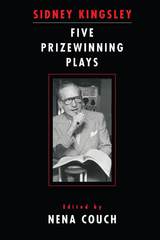 SIDNEY KINGSLEY: FIVE PRIZEWINNING PLAYS
Nena Couch
Ohio State University Press, 1997 Sidney Kingsley was a playwright, but through his writing he played many other parts as well—a social and political activist, a health care reformer, an advocate for children, a patriot, a visionary. Of his nine professionaly produced plays, five garnered major awards. This collection of Kingsley’s award-winning plays fills a void in American dramatic publishing and provides the definitive edition of the plays, each with an introduction by the playwright. Although critical statements on Kingley’s work do appear in significant studies of American theatre, and though his plays continue to be produced, there has never been a standard edition of his major works. Strong threads weave these plays inextricably into the fabric of twentieth-century American theatre—their meticulous, gut-wrenching, yet inspiring realism; their roles of great breadth for actors; their masterfully constructed scripts that in combination with outstanding design provide first-rate theatrical presentations; and perhaps most importantly, their unswerving attention to grave human issues. At a time when abortion may again become illegal and the inadequacy of the health care system is a daily topic, when children facing hopelessness and poverty stare at us from the evening news, when police brutality cases are before the courts, and when issues of individual patriotism and the position of the United States as a democracy in a rapidly changing world arise—in a time, in fact, when all the human rights issues and social problems dealt with in these plays are still, or again, with us—Sidney Kingsley has proven to be a playwright whose work is timely as well as timeless. Includes: Men in White, Dead End, The Patriots, Detective Story, and Darkness at Noon.
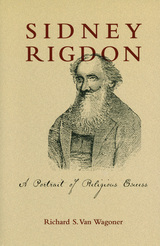 Sidney Rigdon: A Portrait of Religious Excess
Richard S. Van Wagoner
Signature Books, 2006
In the late 1820s a fiery young minister in western Ohio converted nearly 1,000 proselytes to the Reformed Baptist Movement. As these schismatics organized themselves into the new Disciples of Christ church, the Reverend Sidney Rigdon was already aligning himself with another, more radical movement, the Latter-day Saints, where he quickly became the LDS prophet’s principal advisor and spokesman. He served Joseph Smith loyally for the next fourteen years, even through a brief spat over the prophet’s romantic interest in his teenage daughter.
Next to Smith, Rigdon was the most influential early Mormon. He imported Reformed Baptist teachings into Latter-day Saint theology, wrote the canonized Lectures on Faith, championed communalism and isolationism, and delivered many of the most significant early sermons, including the famous Salt Sermon and the Ohio temple dedicatory address.
Following Smith’s death, Rigdon parted company with Brigham Young to lead his own group of some 500 secessionists Mormons in Pennsylvania. Rigdon’s following gradually dwindled, as the one-time orator took to wandering the streets, taunting indifferent passersby with God’s word. He was later recruited by another Mormon faction. Although he refused to meet with them, he agreed to be their prophet and send revelations by mail. Before long he had directed them to settle far-off Iowa and Manitoba, among other things. At his death, his followers numbered in the hundreds, and today they number about 10,000, mostly in Pennsylvania.
“Rigdon is a biographer’s dream,” writes Richard Van Wagoner. Intellectually gifted, manic-depressive, an eloquent orator and social innovator but a chronic indigent, Rigdon aspired to altruism but demanded advantage and deference. When he lost prominence, his early attainments were virtually written out of the historical record.
Correcting this void, Van Wagoner has woven the psychology of religious incontinence into the larger fabric of social history. In doing so, he reminds readers of the significance of this nearly-forgotten founding member of the LDS First Presidency. Nearly ten million members in over one hundred churches trace their heritage to Joseph Smith. Many are unaware of the importance of Rigdon’s contributions to their inherited theology.
Sidney's Poetics: Imitating Creation
Michael Mack
Catholic University of America Press, 2005 Sidney's Poetics is essential reading not only for students and scholars of Renaissance literature and literary theory but also for all who want to understand how human beings write and read creatively.
 The Siege of Fort William Henry: A Year on the Northeastern Frontier
Ben Hughes
Westholme Publishing, 2012 Immortalized in The Last of the Mohicans, the True Story of a Pivotal Battle in the British and French War for the North American Continent
The opening years of the French and Indian War were disastrous for the British. In 1755 General Braddock’s troops were routed at the Battle of Monongahela and by the middle of 1756 Fort Oswego on Lake Ontario had fallen. Hindered by quarrelsome provincial councils, incompetent generals, and the redcoats’ inability to adapt to wilderness warfare, Britain was losing the war. In 1757 the 35th Regiment of Foot stepped into the breach. A poorly trained assortment of conscripts, old soldiers, and convicted criminals led by Lieutenant Colonel George Monro, the regiment was destined to take center stage in the most controversial event of the war. Fort William Henry on the southern shore of New York’s Lake George was a key fortification supporting British interests along the frontier with French America. Monro and his regiment occupied the fort in the spring of 1757 while Britain planned its attack on the key French fortress at Louisbourg, Nova Scotia. Learning that most of Britain’s military resources were allocated to Louisbourg, the French launched a campaign along the weakened frontier. French Commander Louis-Joseph de Montcalm and his American Indian allies laid siege to Fort William Henry; Monro could not hold out and was forced to surrender. As part of the terms, the British regiment, colonial militia, and their camp followers would be allowed safe passage to nearby Fort Edward. The French watched in horror, however, as their Indian allies attacked the British column after it left the fort, an episode that sparked outrage and changed the tactics of the war. Seen through the eyes of participants such as Louis Antoine de Bougainville, a scholarly young aide-de-camp, Jabez Fitch, an amiable Connecticut sergeant, and Kisensik, a proud Nipissing chief whose father once met Louis XIV in the marbled halls of Versailles, The Siege of Fort William Henry: A Year on the Northeastern Frontier uses contemporary newspaper reports, official documents, private letters, and published memoirs to bring the narrative to life. From Indian councils on the banks of the Saint Lawrence River and bustling military camps in northern New York to the narrative’s bloody denouement on the shores of Lake George, the reader is immersed in the colorful, yet brutal world of eighteenth-century northeastern America.
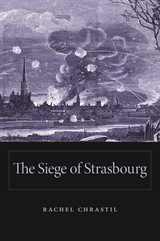 The Siege of Strasbourg
Rachel Chrastil
Harvard University Press, 2014 When war broke out between France and Prussia in the summer of 1870, one of the first targets of the invading German armies was Strasbourg. From August 15 to September 27, Prussian forces bombarded this border city, killing hundreds of citizens, wounding thousands more, and destroying many historic buildings and landmarks. For six terror-filled weeks, “the city at the crossroads” became the epicenter of a new kind of warfare whose indiscriminate violence shocked contemporaries and led to debates over the wartime protection of civilians.
The Siege of Strasbourg recovers the forgotten history of this crisis and the experiences of civilians who survived it. Rachel Chrastil shows that many of the defining features of “total war,” usually thought to be a twentieth-century phenomenon, characterized the siege. Deploying a modern tactic that traumatized city-dwellers, the Germans purposefully shelled nonmilitary targets. But an unintended consequence was that outsiders were prompted to act. Intervention by the Swiss on behalf of Strasbourg’s beleaguered citizens was a transformative moment: the first example of wartime international humanitarian aid intended for civilians.
Weaving firsthand accounts of suffering and resilience through her narrative, Chrastil examines the myriad ethical questions surrounding what is “legal” in war and what rights civilians trapped in a war zone possess. The implications of the siege of Strasbourg far exceed their local context, to inform the dilemmas that haunt our own age—in which collateral damage and humanitarian intervention have become a crucial part of our strategic vocabulary.
The Siege of Sziget
Miklos Zrinyi
Catholic University of America Press, 2011 The work is today considered to be one of the cornerstones of Hungarian literature, and one of most important works of the seventeenth century of any language, but has been virtually unknown and entirely inaccessible outside of Hungary -- until now.
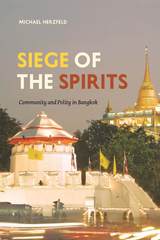 Siege of the Spirits: Community and Polity in Bangkok
Michael Herzfeld
University of Chicago Press, 2016 What happens when three hundred alleged squatters go head-to-head with an enormous city government looking to develop the place where they live? As anthropologist Michael Herzfeld shows in this book, the answer can be surprising. He tells the story of Pom Mahakan, a tiny enclave in the heart of old Bangkok whose residents have resisted authorities’ demands to vacate their homes for a quarter of a century. It’s a story of community versus government, of old versus new, and of political will versus the law.
Herzfeld argues that even though the residents of Pom Mahakan have lost every legal battle the city government has dragged them into, they have won every public relations contest, highlighting their struggle as one against bureaucrats who do not respect the age-old values of Thai/Siamese social and cultural order. Such values include compassion for the poor and an understanding of urban space as deeply embedded in social and ritual relations. In a gripping account of their standoff, Herzfeld—who simultaneously argues for the importance of activism in scholarship—traces the agile political tactics and styles of the community’s leadership, using their struggle to illuminate the larger difficulties, tensions, and unresolved debates that continue to roil Thai society to this day.
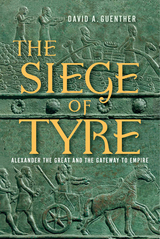 The Siege of Tyre: Alexander the Great and the Gateway to Empire
David A. Guenther
Westholme Publishing, 2024 The island city of Tyre along the coast of Lebanon was for centuries an impregnable fortress and key to unlocking Phoenician and Persian power in the Near East. Its fall was first prophesied in the Book of Ezekiel; but it would not be Nebuchadnezzar, king of Babylon, who would take the city as the Bible foretold, but a Macedonian warrior king, Alexander. Alexander’s siege of 332 BC was one of the most remarkable events in the classical world. “It was the capture of Tyre that did the most to enhance Alexander's reputation for invincibility,” wrote historian Waldemar Heckel, while classicist Paul Cartledge observed, “If Alexander deserves permanent commemoration as a general, then it is above all in his capacity as a besieger, and of all his sieges Tyre was his masterpiece.” Yet books about Alexander and his conquests often simply retell the story as recorded by ancient authors—even though these accounts often disagree—and ignore competing theories among modern scholars about what may have happened given scientific and textual discoveries.
The Siege of Tyre: Alexander the Great and the Gateway to Empire by David A. Guenther is the first book-length treatment of this critical and fascinating campaign, featuring catapults, triremes, religious invocations, close combat, and marvels of engineering, including a massive manmade causeway from the mainland to the island. The siege is thoroughly analyzed from the standpoint of what is plausible given the nature of the technology of the time and what we now know of the geology and physical fortifications of ancient Tyre. The book begins with the background leading up to the siege: Alexander’s army, his invasion of Asia Minor, the sieges of Miletus and Halicarnassus, and the battles of the Granicus and Issus. It also describes the culture, people, cities, and economy of ancient Phoenicia to place the story of the siege in a broader context. Critical to the siege were the evolving technologies in the ancient Mediterranean world, including innovations in catapult design, military engineering, and naval architecture. Guenther also takes into account recent scientific discoveries about the geology of the ancient seabed around Tyre and its effect on the siege. Finally, the book points out possible gender-biased views on topics such as sacred temple prostitution among the ancient Phoenicians and the fate of women in besieged cities of the ancient world. An engrossing blend of ancient wonder and historical and technological analysis, The Siege of Tyre is the remarkable story of Alexander the Great’s “masterpiece.”
Siegecraft: Two Tenth-Century Instructional Manuals by “Heron of Byzantium”
Denis F. Sullivan
Harvard University Press, 2000 The “Parangelmata Poliorcetica” and the “Geodesia,” two Greek treatises on the construction of devices for siege warfare, are products of 10th-century Byzantium. The texts are presented here in critical editions based, for the first time, on the archetype manuscript Vaticanus graecus 1605 and accompanied by an English translation and commentary. The illustrations, reproduced in this edition, go beyond the traditional ground plans of the time and show elevations to represent finished devices in action.
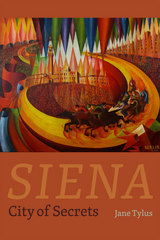 Siena: City of Secrets
Jane Tylus
University of Chicago Press, 2015 Jane Tylus’s Siena is a compelling and intimate portrait of this most secretive of cities, often overlooked by travelers to Italy. Cultural history, intellectual memoir, travelogue, and guidebook, it takes the reader on a quest of discovery through the well- and not-so-well-traveled roads and alleys of a town both medieval and modern.
As Tylus leads us through the city, she shares her passion for Siena in novelistic prose, while never losing sight of the historical complexities that have made Siena one of the most fascinating and beautiful towns in Europe. Today, Siena can appear on the surface standoffish and old-fashioned, especially when compared to its larger, flashier cousins Rome and Florence. But first impressions wear away as we learn from Tylus that Siena was an innovator among the cities of Italy: the first to legislate the building and maintenance of its streets, the first to publicly fund its university, the first to institute a municipal bank, and even the first to ban automobile traffic from its city center.
We learn about Siena’s great artistic and architectural past, hidden behind centuries of painting and rebuilding, and about the distinctive characters of its different neighborhoods, exemplified in the Palio, the highly competitive horserace that takes place twice a year in the city’s main piazza and that serves as both a dividing and a uniting force for the Sienese. Throughout we are guided by the assured voice of a seasoned scholar with a gift for spinning a good story and an eye for the telling detail, whether we are traveling Siena’s modern highways, exploring its underground tunnels, tracking the city’s financial history, or celebrating giants of painting like Simone Martini or giants of the arena, Siena’s former Serie A soccer team.
A practical and engaging guide for tourists and armchair travelers alike, Siena is a testament to the powers of community and resilience in a place that is not quite as timeless and serene as it may at first appear.
 Sienese Hospitals Within and Beyond the City Walls: Charity and the Ospedale di Santa Maria della Scala, 1400–1600
Sarah Loose Guerrero
Arc Humanities Press, 2023 This book combines the history of charitable institutions with the study of power in urban and rural spaces from the late medieval to the early modern era. Focusing on the Ospedale di Santa Maria della Scala in Siena, the book goes beyond examining hospitals in an urban context to also consider the significant impact of charitable institutions in rural spaces. Case studies of Santa Maria della Scala's farms allow an investigation of the relationship between urban institutions and their rural properties, while looking at subject hospitals outside the Sienese state offers a glimpse into the competition for power with non-Sienese entities. As Siena's politics shifted in the sixteenth century, Santa Maria della Scala and its rural spaces became sites where power was negotiated. The book thus demonstrates how geographies of power affected the practice of charity for both urban hospitals and the rural communities they influenced.
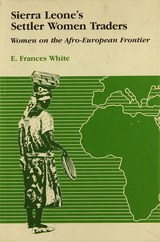 Sierra Leone's Settler Women Traders
E. Frances White
University of Michigan Press, 1987 The early part of the nineteenth century saw the establishment of West Africa’s Sierra Leone settlement as an important center for the expanding trade economy. A surprising number of Sierra Leonean traders were Krio women, whose crosscultural background helped them to mediate the contact between European and African markets.In Sierra Leone's Settler Women Traders, E. Frances White has unearthed the fascinating social and economic history of these women traders from the late eighteenth to the mid-twentieth century. Using a lively mixture of newspaper accounts, contemporary observations, colonial documents, and oral histories, this book tells the story of former slaves and captives from Jamaica, North America, and other areas of West Africa who became successful traders linking their regional trade networks with the international economy. The study traces the eventual decline of the Sierra Leone traders’ influence under the extension of colonial rule and documents the gradual shift of Krio women into professional and semiprofessional occupations.Sierra Leone's Settler Women Traders rescues these women from the invisibility that often befails colonial subcultures and sheds new light on the role of women as cultural brokers across ethnic boundaries, resulting in a study that makes a significant contribution to the ongoing debate over the impact of colonial rule on women in Africa.
The Sierra Nevada: A Mountain Journey
Tim Palmer
Island Press, 1988 This book presents a natural history of the Sierra Nevada that brings the land, the people, and the surrounding communities to life.
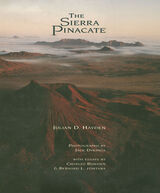 The Sierra Pinacate
Julian D. Hayden; Photographs by Jack Dykinga; With Essays by Charles Bowden and Bernard L. Fontana
University of Arizona Press, 1998 South of the border, a spectacular range of ancient volcanoes rises from the desert floor just a few miles from the Sea of Cortez. Virtually untraveled, the Sierra Pinacate in northwestern Mexico beckons adventurers and scientists. Here, in words and pictures, is a remarkable introduction to this place of almost surreal beauty. Sometimes veiled in clouds or dust storms, the Pinacate have long been shrouded in mystery as well. From prehistoric times until today, people of Sonora have told tales of giants, men and animals, bottomless pits, endless tunnels, hostile Indians, smoking caverns, and ever-present dangers found in the Pinacate. This book takes readers deep into the heart of this fascinating area. Julian Hayden, who worked and traveled in the Pinacate for four decades, introduces the natural history, archaeology, geology, and human history of the area. Spectacular color photographs by Jack Dykinga capture the magic and the isolation of this stunning region. Hayden's text is presented in both English and Spanish. The Mexican government has already declared the Pinacate an officially protected biosphere reserve; still pending is its inclusion in the Man and the Biosphere program of the United Nations. More than a natural history, The Sierra Pinacate is an elegant appreciation of a place of wonder.
Sifrut al Ketzeh Halashon: Intermediate Hebrew Textbook
Edna Genossar Grad
Northwestern University Press, 1992 This text is directly dedicated to the intermediate Hebrew student. Organized by topics from everyday life and Jewish heritage and culture, it provides a familiar framework for the development of skills in both written and spoken Hebrew. The guide is unique in its inclusion of many literary selections representative of modern Hebrew literature, each introduced by introductory essays placing the works in historical and social context. Immediate and cumulative review sections reinforce a rich vocabulary and, unlike most texts at this level, the selections expose the student to colloquial, formal, Biblical, and rabbinic Hebrew.
Sifrut al Ketzeh Halashon: Intermediate Hebrew Workbook
Edna Genossar Grad
Northwestern University Press, 1992 This text is directly dedicated to the intermediate Hebrew student. Organized by topics from everyday life and Jewish heritage and culture, it provides a familiar framework for the development of skills in both written and spoken Hebrew. The guide is unique in its inclusion of many literary selections representative of modern Hebrew literature, each introduced by introductory essays placing the works in historical and social context. Immediate and cumulative review sections reinforce a rich vocabulary and, unlike most texts at this level, the selections expose the student to colloquial, formal, Biblical, and rabbinic Hebrew.
 Sight Unseen: Beckett, Pinter, Stoppard, and Other Contemporary Dramatists on Radio
Elissa S. Guralnick
Ohio University Press, 1994 In Sight Unseen radio drama, a genre traditionally dismissed as popular culture, is celebrated as high art. The radio plays discussed here range from the conventional (John Arden’s Pearl) to the docudramatic (David Rudkin’s Cries from Casement), from the curtly conversational (Harold Pinter’s A Slight Ache) to the virtually operatic (Robert Ferguson’s Transfigured Night), testifying to radio drama’s variety and literary stature. Two of the plays included in this study pose aesthetic questions—the role of art in politics (Howard Barker’s Scenes from an Execution), and the nature of artistic excellence (Tom Stoppard’s Artist Descending a Staircase).
Guralnick contends that well-crafted radio plays tend to meld to their medium so naturally that they cannot be transferred to the theater or to film without being diminished. Each play is thus shown to exploit, to special effect, one of radio’s fundamental features: its invisible stage (Barker and Stoppard), its affinity to music (Ferguson and Beckett), its ability to imitate the mind’s subjectivity (Kopit and Pinter), its association with world events through features and the news (Rudkin). As for the question of radio’s relation to the theater, the issue is engaged in the work of John Arden, who dares to portray a theatrical stage on the airwaves, while intimating that the radio offers contemporary playwrights an incomparable boon: creative conditions roughly equivalent to those enjoyed by Shakespeare.
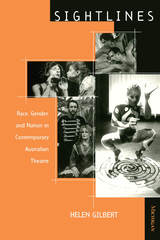 Sightlines: Race, Gender, and Nation in Contemporary Australian Theatre
Helen Gilbert
University of Michigan Press, 1998 Sightlines: Race, Gender, and Nation in Contemporary Australian Theatre asserts the centrality of theater to the ongoing negotiations of the Australian context. By exploring ways in which ideas about race, gender, and nation are expressed in concrete theatrical contexts, the performative qualities of theatrical representation are revealed as compelling, important sites of critique. Helen Gilbert discusses an exciting variety of plays, drawing examples from marginalized groups as well as from the theatrical mainstream. While fully engaged with the discourses of contemporary critical thought, Sightlines remains focused on the material stuff of the theater, grounding its discussion in the visual elements of costume, movement, and scenography. And although focused specifically on performance, the author's insistent interest in historical and political contexts also speaks to the broader concerns of cultural studies. The book's recurrent concern with representations of Aboriginality, particularly in the works of nonindigenous playwrights, draws attention to racial politics as a perennial motif in postcolonial nations. Its illumination of the relationships between patriarchy and imperialism is supported by an extensive discussion of plays by and about women. This nomadic approach marks Sightlines as a groundbreaking study of recent Australian theater, a provocative application of postcolonial theory to the embodied qualities of theatrical representation. "An impressive and ground-breaking study that provides a coherent postcolonial approach to Australian drama." --Bill Ashcroft, University of New South Wales "Elegantly written, and always beautifully lucid in its argument. . . . this is a very original work, particularly in its marriage of performance theory and postcolonial analysis." --Deidre Coleman, University of Sydney Helen Gilbert is Lecturer in Drama and Theatre Studies, University of Queensland, and co-author, with Joanne Tompkins, of Post-Colonial Drama: Theory, Practice, Politics.
 Sights On The Sixties
Tischler, Barbara L.
Rutgers University Press, 1992 Barbara Tischler's goal is to understand the historical and cultural legacy of the 1960s. During the Gulf War, as politicians advocated positions and strategies, they made simplistic comparisons with the '60s. Such comparisons reinforced our need to understand that decade more clearly. With these papers Tischler brings together a group of scholars from a variety of disciplines, including American Studies, anthropology, film studies, history, literature, sociology, and theater. She notes how their contributions, taken separately and together, transcend the "good sixties/bad sixties" typology that has pervaded past analyses of the period. Several authors deal with movement leaders and great events, but the majority write about lesser-known events and people, to add depth and balance to our understanding of the decade.
1. Multi-disciplinary collection 2. Emphasis on less well-known events of the period 3. Presents balanced picture of the decade
 Sign and Design: Script as Image in Cross-Cultural Perspective (300–1600 CE)
Brigitte Miriam Bedos-Rezak
Harvard University Press From antiquity to the modern age, legal, documentary, exegetical, literary, and linguistic traditions have viewed the relationship between image and letter in diverse ways. There is a long history of scholarship examining this relationship, probing the manner and meaning of its dynamics in terms of equivalency, complementarity, and polarity.
This volume addresses the pictorial dimension of writing systems from cross-cultural and multidisciplinary perspectives. Historians—including specialists in art and literature—paleographers, and anthropologists consider imagistic scripts of the ancient and medieval Near East, Europe, Byzantium, and Latin America, and within Jewish, polytheistic, Christian, and Muslim cultures. They engage with pictographic, ideographic, and logographic writing systems, as well as with alphabetic scripts, examining diverse examples of cross-pollination between language and art.
Sign Here If You Exist and Other Essays
Jill Sisson Quinn
Ohio State University Press, 2020 Finalist for the 2022 ASLE Book Award in Creative Writing
Sign Here If You Exist explores states of being and states of mind, from the existence of God to sense of place to adoptive motherhood. In it, Jill Sisson Quinn examines how these states both disorient and anchor us as she treks through forests, along shorelines and into lakes and rivers as well as through memories and into scientific literature.Each essay hinges on an unlikely pairing—parasitic wasps and the afterlife, or salamanders and parenthood—in which each element casts the other in unexpectedly rich light. Quinn joins the tradition of writers such as Annie Dillard, Scott Russell Sanders, and Eula Biss to deliver essays that radiate from the junction of science and imagination, observation and introspection, and research and reflection.
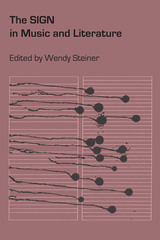 The Sign in Music and Literature
Edited by Wendy Steiner
University of Texas Press, 1981 The notion of semiotics as a universal language that can encompass any object of perception makes it the focus of a revolutionary field of inquiry, the semiotics of art. This volume represents a unique gathering of semiotic approaches to art: from Saussurian linguistics to transformational grammar, from Prague School aesthetics to Peircean pragmatism, from structuralism to poststructuralism. Though concerned specifically with the semiotics of music and literature, the essays reveal the breadth of semiotics’ interdisciplinary appeal, involving specialists in musicology, ethnomusicology, jazz performance, literary criticism, poetics, aesthetics, rhetoric , linguistics, dance, and film. The diversity of authorial training and approach makes this collection a dramatic demonstration of the on-going debates in the field. In many ways the semiotics of art is the testing ground of sign theory as a whole, and work in this subject is as vital to the interests of theoretical semioticians as to students of the arts. It is to both these interests that this volume is addressed.
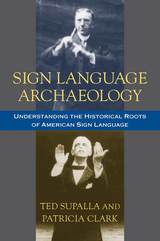 Sign Language Archaeology: Understanding the Historical Roots of American Sign Language
Ted Supalla
Gallaudet University Press, 2014 This engrossing study investigates the infancy of American Sign Language (ASL). Authors Ted Supalla and Patricia Clark highlight the major events in ASL history, revealing much of what has not been clearly understood until now. According to tradition, ASL evolved from French Sign Language. The authors analyze the metalinguistic assumptions of these early accounts and also examine in depth a key set of films made by the National Association of the Deaf (NAD) between 1910 and 1920. Designed by the NAD to preserve classic ASL, the films feature 15 sign masters, the model signers of that time. In viewing these films, the authors discovered that the sign masters signed differently depending on their age. These variations provide evidence about the word formation process of early ASL, further supported by data collected from dictionaries of the 19th and early 20th centuries.
By tracing the writings of selected individuals, this study reconstructs the historical context for early ASL grammar. It describes the language used in each century and how it changed, and focuses on the rediscovery of the literary legacy of the Deaf American voice. Sign Language Archaeology reveals the contrast between folk etymology and scientific etymology and allows readers to see ASL in terms of historical linguistics.
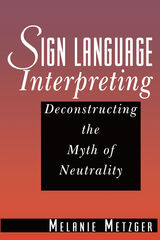 Sign Language Interpreting: Deconstructing the Myth of Neutrality
Melanie Metzger
Gallaudet University Press, 1998 As with all professional interpreters, sign language interpreters strive to achieve the proper protocol of complete objectivity and accuracy in their translation without influencing the interaction in any way. Yet, Melanie Metzger's significant work Sign Language Interpreting: Deconstructing the Myth of Neutrality demonstrates clearly that the ideal of an interpreter as a neutral language conduit does not exist. Metzger offers evidence of this disparity by analyzing two videotaped ASL-English interpreted medical interviews, one an interpreter-trainee mock interview session, and the other an actual encounter between a deaf client and a medical professional.
Sign Language Interpreting relies upon an interactional sociolinguistic approach to ask fundamental questions regarding interpreter neutrality. First, do interpreters influence discourse, and if so, how? Also, what kind of expectations do the participants bring to the event, and what do the interpreters bring to discussions? Finally, how do their remarks affect their alignment with participants in the interaction? Using careful assessments of how these interviews were framed, and also re-interviewing the participants for their perspectives, this penetrating book discloses the ways in which interpreters influence these situations. It also addresses the potential implications of these findings regarding sign language interpretation in medical, educational, and all other general interactions. Interpreter trainers and their students will join certified interpreters and Deaf studies scholars in applauding and benefiting from the fresh ground broken by this provocative study.
 Sign Language Interpreting for Theatre: A Collaborative Approach
Lynnette Taylor
Gallaudet University Press, 2025 Written by three veteran interpreters with deep roots in the Deaf community and the performing arts, Sign Language Interpreting for Theatre is the first of its kind: a comprehensive guide to the art of sign language interpreting for the theatre as a collaborative practice. Drawing from their years of experience of interpreting On- and Off-Broadway and blending the theoretical with the practical, Lynnette Taylor, Stephanie Feyne, and Candace Broecker Penn provide guiding principles, best practices, processes, and strategies for creating dynamic, collaborative, culturally-grounded sign language translations for theatre performances. Written in an engaging, conversational style, chapters include in-depth discussion of both theory and practice, providing techniques for translation and stagecraft along with practical insights for issues such as interpreting team attributes, character depiction, working with scripts, song translations, interpreting for young audiences, and interpreting virtual and recorded performances. With its emphasis upon dialogic interpretation, shared responsibility, and alliances, this guide is an indispensable resource for interpreters, educators, and theatre professionals.
Sign Language Research: Theoretical Issues
Ceil Lucas
Gallaudet University Press, 1990 The second international conference on sign language research, hosted by Gallaudet University, yielded critical findings in vital linguistic disciplines — phonology, morphology, syntax, sociolinguistics, language acquisition and psycholinguistics. Sign Language Research brings together in a fully synthesized volume the work of 24 of the researchers invited to this important gathering. Scholars from Belgium to India, from Finland to Uganda, and from Japan to the United States, exchanged the latest developments in sign language research worldwide. Now, the results of their findings are in this comprehensive volume complete with illustrations and photographs.
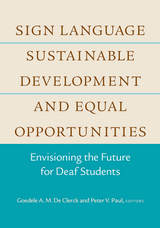 Sign Language, Sustainable Development, and Equal Opportunities: Envisioning the Future for Deaf Students
Goedele A. M. De Clerck
Gallaudet University Press, 2016 Increased interaction between sign language communities and the mainstream societies in which they function is creating the potential for greater equality of opportunity for people who are deaf and hard of hearing. In this volume, renowned scholars and policy makers from around the world present innovative and groundbreaking perspectives on the relationships among sign language, sustainable development, and equal opportunities.
The contributors to this volume offer creative and open-minded explorations of the construct of sustainability that are informed by their work with deaf individuals, deaf communities, families of deaf children, and other stakeholders. Sign Language, Sustainable Development, and Equal Opportunities describes sustainability in relation to:
· identity, resilience, and well-being
· participatory citizenship
· historical perspectives on sign language use in educational contexts
· sign language learning and teaching
· human rights and inclusive education
· literate thought and literacy
· the sign language factor and the development of sign language communities in sub-Saharan Africa
· sign language legislation
These changing communities’ understanding of what is required to become sustainable—in areas such as full participation and citizenship in society, economic well-being, access to quality education, and cultural and linguistic identity—is also taking new forms. This work contributes to the paradigm shifts regarding deaf emancipation and deaf education taking place around the world.
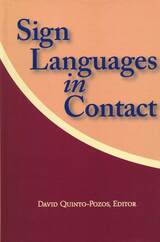 Sign Languages in Contact
David Quinto-Pozos
Gallaudet University Press, 2007 The 13th Volume in the Sociolinguistics in Deaf Communities Series
This volume collects for the first time various accounts of contact between sign languages throughout the world, presenting an exciting opportunity to further understand the structural and social factors of this linguistic component in Deaf communities. Editor David Quinto-Pozos has divided Sign Languages in Contact into four parts, starting with Contact in a Trilingual Setting. The sole essay in this section features a study of Maori signs by Rachel McKee, David McKee, Kirsten Smiler, and Karen Pointon that reveals the construction of indigenous Deaf identity in New Zealand Sign Language.
In Part Two: Lexical Comparisons, Jeffrey Davis conducts an historic, linguistic assessment of varieties of North American Indian sign languages. Daisuke Sasaki compares the Japanese Sign Language lexicon with that of Taiwan Sign Language by focusing on signs that share the same meaning and all parameters except for their handshapes. Judith Yoel’s chapter takes up the entirety of Part Three: Language Attrition, with her analysis of the erosion of Russian Sign Language among immigrants to Israel.
The final part describes how educators and other “foreign”visitors can influence indigenous sign languages. Karin Hoyer delineates the effects of international sign and gesture on Albanian Sign Language. Jean Ann, Wayne H. Smith, and Chiangsheng Yu close this significant collection by assessing contact between Mainland China’s sign language and Taiwan Sign Language in the Ch’iying School in Taiwan.
 The Sign of the Burger: Mcdonald'S And The Culture Of Power
Joe Kincheloe
Temple University Press, 2002 "I didn't want to remain a hick from the mountains... In my cultural naivete I saw McDonald's as a place somehow where modern culture capital could be dispensed. Keeping these memories in mind as years later I monitored scores of conversations about the Golden Arches in the late 1990's, it became apparent that McDonald's is still considered a marker of a modern identity." So begins a complicated journey into the power of one of the most recognizable signs of American capitalism: The Golden Arches. The Sign of the Burger examines how McDonald's captures our imagination: as a shorthand for explaining the power of American culture; as a symbol of the strength of consumerism; as a bellwether for the condition of labor in a globalized economy; and often, for better or worse, a powerful educational tool that often defines the nature of culture for hundreds of millions the world over. While many books have offered simple complaints of the power of McDonald's, Joe Kincheloe explores the real ways McDonald's affects us. We see him as a young boy in Appalachia, watching the Golden Arches going up as the—hopeful—arrival of the modern into his rural world. And we travel with him around the world to see how this approach of the modern affects other people, either through excitement or through attempts at resisting McDonald's power, often in unfortunate ways. Through it all, Kincheloe makes clear, with lucidity and depth, the fact that McDonald's growth will in many ways determine both the nature of accepting and protesting its ever-expanding presence in our global world. postamble();
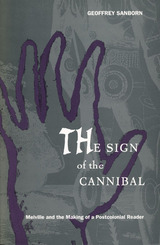 The Sign of the Cannibal: Melville and the Making of a Postcolonial Reader
Geoffrey Sanborn
Duke University Press, 1998 In The Sign of the Cannibal Geoffrey Sanborn offers a major reassessment of the work of Herman Melville, a definitive history of the post-Enlightenment discourse on cannibalism, and a provocative contribution to postcolonial theory. These investigations not only explore mid–nineteenth century resistance to the colonial enterprise but argue that Melville, using the discourse on cannibalism to critique colonialism, contributed to the production of resistance.
Sanborn focuses on the representations of cannibalism in three of Melville’s key texts—Typee, Moby-Dick, and “Benito Cereno.” Drawing on accounts of Pacific voyages from two centuries and virtually the entire corpus of the post-Enlightenment discourse on cannibalism, he shows how Melville used his narratives to work through the ways in which cannibalism had been understood. In so doing, argues Sanborn, Melville sought to move his readers through stages of possible responses to the phenomenon in order to lead them to consider alternatives to established assumptions and conventions—to understand that in the savage they see primarily their own fear and fascination. Melville thus becomes a narrator of the postcolonial encounter as he uncovers the dynamic of dread and menace that marks the Western construction of the “non-savage” human.
Extending the work of Slavoj Zizek and Homi Bhabha while providing significant new insights into the work of Melville, The Sign of the Cannibal represents a breakthrough for students and scholars of postcolonial theory, American literary history, critical anthropology, race, and masculinity.
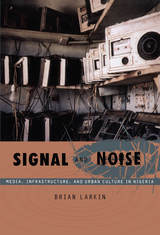 Signal and Noise: Media, Infrastructure, and Urban Culture in Nigeria
Brian Larkin
Duke University Press, 2008 Mainstream media and film theory are based on the ways that media technologies operate in Europe and the United States. In this groundbreaking work, Brian Larkin provides a history and ethnography of media in Nigeria, asking what media theory looks like when Nigeria rather than a European nation or the United States is taken as the starting point. Concentrating on the Muslim city of Kano in the north of Nigeria, Larkin charts how the material qualities of technologies and the cultural ambitions they represent feed into the everyday experiences of urban Nigeria. Media technologies were introduced to Nigeria by colonial regimes as part of an attempt to shape political subjects and create modern, urban Africans. Larkin considers the introduction of media along with electric plants and railroads as part of the wider infrastructural project of colonial and postcolonial urbanism. Focusing on radio networks, mobile cinema units, and the building of cinema theaters, he argues that what media come to be in Kano is the outcome of technology’s encounter with the social formations of northern Nigeria and with norms shaped by colonialism, postcolonial nationalism, and Islam. Larkin examines how media technologies produce the modes of leisure and cultural forms of urban Africa by analyzing the circulation of Hindi films to Muslim Nigeria, the leisure practices of Hausa cinemagoers in Kano, and the dynamic emergence of Nigerian video films. His analysis highlights the diverse, unexpected media forms and practices that thrive in urban Africa. Signal and Noise brings anthropology and media together in an original analysis of media’s place in urban life.
Signal Processing and Machine Learning for Brain-Machine Interfaces
Toshihisa Tanaka
The Institution of Engineering and Technology, 2018 Brain-machine interfacing or brain-computer interfacing (BMI/BCI) is an emerging and challenging technology used in engineering and neuroscience. The ultimate goal is to provide a pathway from the brain to the external world via mapping, assisting, augmenting or repairing human cognitive or sensory-motor functions.
Signal Processing for Fault Detection and Diagnosis in Electric Machines and Systems
Mohamed Benbouzid
The Institution of Engineering and Technology, 2021 Over the last three decades, the search for competitiveness and growth gains has driven the evolution of machine maintenance policies, and the industry has moved from passive maintenance to active maintenance with the aim of improving productivity. Active maintenance requires continuous monitoring of industrial systems in order to increase reliability, availability rates and guarantee the safety of people and property.
Signal Processing to Drive Human-Computer Interaction: EEG and eye-controlled interfaces
Spiros Nikolopoulos
The Institution of Engineering and Technology, 2020 The evolution of eye tracking and brain-computer interfaces has given a new perspective on the control channels that can be used for interacting with computer applications. In this book leading researchers show how these technologies can be used as control channels with signal processing algorithms and interface adaptations to drive a human-computer interface.
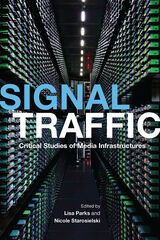 Signal Traffic: Critical Studies of Media Infrastructures
Edited by Lisa Parks and Nicole Starosielski
University of Illinois Press, 2015 The contributors to Signal Traffic investigate how the material artifacts of media infrastructure--transoceanic cables, mobile telephone towers, Internet data centers, and the like--intersect with everyday life. Essayists confront the multiple and hybrid forms networks take, the different ways networks are imagined and engaged with by publics around the world, their local effects, and what human beings experience when a network fails. Some contributors explore the physical objects and industrial relations that make up an infrastructure. Others venture into the marginalized communities orphaned from the knowledge economies, technological literacies, and epistemological questions linked to infrastructural formation and use. The wide-ranging insights delineate the oft-ignored contrasts between industrialized and developing regions, rich and poor areas, and urban and rural settings, bringing technological differences into focus. Contributors include Charles R. Acland, Paul Dourish, Sarah Harris, Jennifer Holt and Patrick Vonderau, Shannon Mattern, Toby Miller, Lisa Parks, Christian Sandvig, Nicole Starosielski, Jonathan Sterne, and Helga Tawil-Souri.
Signaling Goodness: Social Rules and Public Choice
Phillip J. Nelson and Kenneth V. Greene
University of Michigan Press, 2003 Political, intellectual, and academic discourse in the United States has been awash in political correctness, which has itself been berated and defended -- yet little understood. As a corrective, Nelson and Greene look at a more general process: adopting political positions to enhance one's reputation for trustworthiness both to others and to oneself.
Phillip Nelson and Kenneth Greene are Professors of Economics in the Department of Economics at the State University of New York, Binghamton.
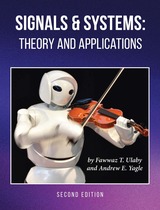 Signals and Systems: Theory and Applications
Fawwaz T. Ulaby and Andrew E. Yagle
Michigan Publishing, 2018 [From the Preface] This is a signals and systems textbook with a difference: Engineering applications of signals and systems are integrated into the presentation as equal partners with concepts and mathematical models, instead of just presenting the concepts and models and leaving the student to wonder how it all relates to engineering.
The first six chapters of this textbook cover the usual basic concepts of continuous-time signals and systems, including the Laplace and Fourier transforms. Chapters 7 and 8 present the discrete-time version of Chapters 1–6, emphasizing the similarities and analogies, and often using continuous-time results to derive discrete-time results. The two chapters serve to introduce the reader to the world of discrete-time signals and systems. Concepts highlighted in Chapters 1–8 include: compensator feedback configuration (Ch. 4); energy spectral density, group delay, expanded coverage of exponential Fourier series (Ch. 5); filtering of images, Hilbert transform, single-sideband (SSB), zero and first-order hold interpolation (Ch. 6); the Cooley-Tukey FFT (Ch. 7); bilateral z-transform and use for non-minimum-phase deconvolution (Ch. 8). Chapter 9 covers the usual concepts of discrete-time signal processing, including data windows, FIR and IIR filter design, multirate signal processing, and auto-correlation and crosscorrelation. It also includes some nontraditional concepts, including spectrograms, application of multirate signal processing, and the musical circle of fifths to audio signal processing, and some biomedical applications of autocorrelation and cross-correlation. Chapter 10 covers image processing, discrete-time wavelets (including the Smith-Barnwell condition and the Haar and Daubechies discrete-time wavelet expansions), and an introduction to compressed sensing. This is the first sophomore-junior level textbook the authors are aware of that allows students to apply compressed sensing concepts. Applications include: image denoising using 2-D filtering; image denoising using thresholding and shrinkage of image wavelet transforms; image deconvolution using Wiener filters; “valid” image deconvolution using ISTA; image inpainting; tomography and the projection-slice theorem, and image reconstruction from partial knowledge of 2-D DFT values. Problems allow students to apply these techniques to actual images and learn by doing, not by only reading.
Signals of Being, or Verbum Caro Factum Est: A Play in Three Acts
Volodymyr Rafeyenko
Harvard University Press, 2025 In the early days of Russia’s 2022 invasion of Ukraine, the residents of a small co-op community outside of Kyiv find themselves in increasingly desperate circumstances, surrounded by occupying Russian forces. Pinched between Bucha and Borodianka, cut off from aid, and unable to escape, their attempts at survival rely on connection: a cellphone signal in the forest, their bonds with each other, and, ultimately, new understandings of what it means to be Ukrainian. Weaving Shakespeare with both Ukrainian literary classics and contemporary works, Volodymyr Rafeyenko’s Signals of Being stages a captivating dramatic interpretation of a country at war.
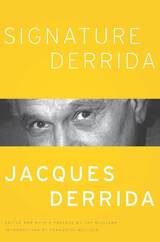 Signature Derrida
Jacques Derrida
University of Chicago Press, 2013 Throughout his long career, Jacques Derrida had a close, collaborative relationship with Critical Inquiry and its editors. He saved some of his most important essays for the journal, and he relished the ensuing arguments and polemics that stemmed from the responses to his writing that Critical Inquiry encouraged. Collecting the best of Derrida’s work that was published in the journal between 1980 and 2002, Signature Derrida provides a remarkable introduction to the philosopher and the evolution of his thought. These essays define three significant “periods” in Derrida’s writing: his early, seemingly revolutionary phase; a middle stage, often autobiographical, that included spirited defense of his work; and his late period, when his persona as a public intellectual was prominent, and he wrote on topics such as animals and religion. The first period is represented by essays like “The Law of Genre,” in which Derrida produces a kind of phenomenological narratology. Another essay, “The Linguistic Circle of Geneva,” embodies the second, presenting deconstructionism at its best: Derrida shows that what was imagined to be an epistemological break in the study of linguistics was actually a repetition of earlier concepts. The final period of Derrida’s writing includes the essays “Of Spirit” and “The Animal That Therefore I Am (More to Follow),” and three eulogies to the intellectual legacies of Michel Foucault, Louis Marin, and Emmanuel Lévinas, in which Derrida uses the ideas of each thinker to push forward the implications of their theories. With an introduction by Francoise Meltzer that provides an overview of the oeuvre of this singular philosopher, Signature Derrida is the most wide-ranging, and thus most representative, anthology of Derrida’s work to date.
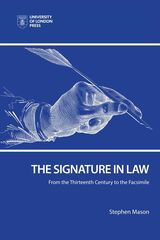 The Signature in Law: From the Thirteenth Century to the Facsimile
Stephen Mason
University of London Press, 2022 This book considers the judicial development of the signature—its definition, purpose, and legal functions.
Since the thirteenth century, the signature has been used to demonstrate proof of intent. This book puts the concept of the signature into a broad legal context, setting out the purposes and functions of a signature. Drawing on cases from common law jurisdictions across the world, this book demonstrates that judges expanded the meaning of the signature as technologies developed and were used in unanticipated ways.
Following an overview of the historical methods used to demonstrate proof of intent and authentication, the book considers the judicial response to the variations in form that signatures have been subject to over the past two hundred years, from initials, partial signatures, and fingerprints to rubber stamps and typewriting. Past judicial decision-making not only demonstrates the flexibility of the form a signature can take but also confirms that judges had the flexibility of mind to accept the first forms of electronic signature (telex, facsimile transmission) without the aid of special legislation. In this way, the signature is a prime example of the inherent flexibility of the English common law.
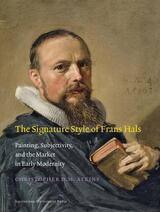 The Signature Style of Frans Hals: Painting, Subjectivity, and the Market in Early Modernity
Christopher D. M. Atkins
Amsterdam University Press, 2012 This richly illustrated study is the first consider the manifold functions and meanings of Hals’s distinctive handling of paint. Atkins explores the uniqueness of Hals’s approach to painting and the relationship of his manner to seventeenth-century aesthetics. He also investigates the economic motivations and advantages of his methods, the operation of the style as a personal and workshop brand, and the apparent modernity of the artist’s style. The book seeks to understand the multiple levels on which Hals’s consciously cultivated manner of painting operated for himself, his pupils and assistants, his clients, and succeeding generations of viewers. As a result, the book offers a wholly new understanding of one of the leading artists of the Dutch Golden Age, and one of the most formative painters in the history of art in the Western tradition. It also provides a much needed interrogation of the interrelationships of subjectivity, style, authorship, methods of artistic and commercial production, economic consumption, and art theory in early modernity.
Sign-Based Construction Grammar
Edited by Hans C. Boas and Ivan A. Sag
CSLI, 2012 This book offers a long-awaited unified and precise treatise on construction-based grammar. The approach to grammar presented here is the union of Berkeley Construction Grammar, as represented by the early work of Charles J. Fillmore and Paul Kay, with construction HPSG as pioneered by Ivan Sag, Carl Pollard, and others. The presentation of this theory in a detailed chapter by Sag presents the full outlines of a new approach to grammar. It reflects the confluence of two separate, although converging, traditions, and constitutes a novel synthesis.
The Signed English Starter
Harry Bornstein
Gallaudet University Press, 1984 The Signed English Starter is the first book to use when learning Signed English. It contains 940 basic signs presented topically, a method especially suited to beginning signers.
The organization of the volume facilitates learning. It provides a basic, functional sign vocabulary; a systematic progression in the use of the 14 sign markers; discussion of the unique features of a manual English system; a glossary of terms; and a page of exercises following each of the 12 chapters in the book. The words have been selected to be of most value to young children.
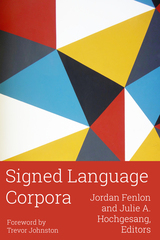 Signed Language Corpora
Jordan Fenlon
Gallaudet University Press, 2022 Jordan Fenlon and Julie A. Hochgesang present a revolutionary contribution to the field of signed language linguistics with Signed Language Corpora, the first volume to provide a comprehensive overview of the creation, development, and use of signed language corpora. This work will advance discussions on corpus linguistics as a methodology and its place in signed language linguistics research.
The ability to search corpora to obtain information about the frequency of patterns in language is an important step forward for signed language research. Access to large datasets will expand scholarly understandings of signed language structure in ways never before possible. Through reflective discussions on the processes of creating, using, and utilizing corpora, the editors and contributors hope that other linguists will be inspired to take similar steps. The descriptions provided in this book have been written to provide a framework for those eager to develop or make use of signed language corpora for their respective signed language varieties. Creating signed language corpora is significant not only for linguistic research, but for the long-term preservation of collected texts that include the stories and histories of signed language communities.
Additional areas of focus include the use of signed language corpora in applied settings, the ethics of working with signed language communities, and the future of this methodology in research.
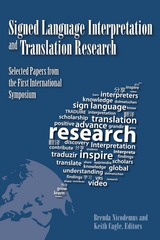 Signed Language Interpretation and Translation Research: Selected Papers from the First International Symposium
Brenda Nicodemus
Gallaudet University Press, 2015 This volume brings together the best research presented at the first International Symposium on Signed Language Interpreting and Translation Research. Editors Brenda Nicodemus and Keith Cagle have gathered an international group of contributors who are recognized leaders in signed language interpreter education and research.
The ten papers in Signed Language Interpretation and Translation Research cover a range of topics, including the need for Deaf perspectives in interpretation research, discourse strategies and techniques that are unique to video relay call settings, the benefits of using sociology as a lens for examining sign language interpreting work, translating university entrance exams from written Portuguese into Libras (Brazilian Sign Language), the linguistic choices interpreters make when interpreting ASL figurative language into English, the nature of designated interpreting, and grammatical ambiguity in trilingual VRS interpreting. The research findings and insights contained here will be invaluable to scholars, students, and practitioners.
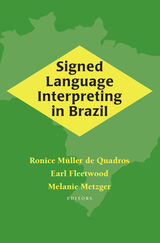 Signed Language Interpreting in Brazil
Ronice Müller de Quadros
Gallaudet University Press, 2012 The ninth volume in the Studies in Interpretation series offers six succinct chapters on the state of signed language interpreting by Brazil by editors Ronice Müller de Quadros, Earl Fleetwood, Melanie Metzger and ten Brazilian researchers. The first chapter advocates for the affiliation of Brazilian Sign Language (Libras) interpretation research with the field of Translation Studies to generate greater academic power empowerment of Libras. The second chapter outlines how Brazilian sign language interpreters construct a position in discourse. Chapter 3 explores the possibility that bimodal, bilingual interpreters—hearing children of deaf adults—face unique cognitive tasks compared to unimodal bilingual interpreters.
Chapter 4 describes how the systematic expansion and documentation of new academic and technical terms in Brazilian Sign Language, in which fingerspelling is uncommon, resulted in the development of an online glossary. The fifth chapter details the challenges of Libras interpreters in high schools. Chapter 6 concludes this revealing collection with findings on whether gender traits influence the act of interpretation of Brazilian Sign Language.
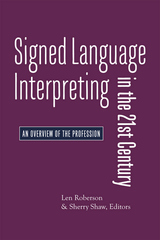 Signed Language Interpreting in the 21st Century: An Overview of the Profession
Len Roberson
Gallaudet University Press, 2018 This text provides interpreting students with a broad knowledge base that encompasses the latest research, addresses current trends and perspectives of the Deaf community, and promotes critical thinking and open dialogue about the working conditions, ethics, boundaries, and competencies needed by a highly qualified interpreter in various settings. This volume expands the resources available to aspiring interpreters, including Deaf interpreters, and incorporates the voices of renowned experts on topics relevant to today’s practitioners.
Each chapter provides students with objectives, keywords, and discussion questions. The chapters convey clear information about topics that include credentialing, disposition and aptitude for becoming an interpreter, interpreting for people who are DeafBlind, and working within specialty settings, such as legal and healthcare. A key resource for interpreter certification test preparation, this text follows the interpreter’s ethical, practical, and professional development through a career of lifelong learning and service.
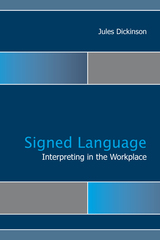 Signed Language Interpreting in the Workplace
Jules Dickinson
Gallaudet University Press, 2017 The last forty years have seen a dramatic change in the nature of work, with deaf people increasingly moving into white collar or office-based professions. The rise of deaf professionals has led to employment opportunities for signed language interpreters across a variety of workplace settings, creating a unique set of challenges that require specialized strategies. Aspects such as social interaction between employees, the unwritten patterns and rules of workplace behavior, hierarchical structures, and the changing dynamics of deaf employee/interpreter relationships place constraints upon the interpreter’s role and interpreting performance.
Jules Dickinson’s examination of interpreted workplace interactions is based on the only detailed, empirical study of this setting to date. Using practitioner responses and transcripts of real-life interpreted workplace interactions, Dickinson’s findings demonstrate the complexity of the interpreter’s role and responsibilities. The book concentrates on the ways in which signed language interpreters affect the interaction between deaf and hearing employees in team meetings by focusing on humor, small talk, and the collaborative floor. Signed Language Interpreting in the Workplace demonstrates that deaf employees require highly skilled professionals to enable them to integrate into the workplace on a level equal with their hearing peers. It also provides actionable insights for interpreters in workplace settings that will be a valuable resource for interpreting students, practitioners, interpreter trainers, and researchers.
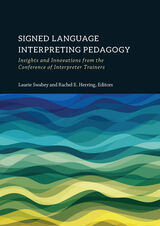 Signed Language Interpreting Pedagogy: Insights and Innovations from the Conference of Interpreter Trainers
Laurie Swabey
Gallaudet University Press, 2022 For over forty years, the Conference of Interpreter Trainers has provided opportunities for advancing teaching and learning in interpreter education. This volume highlights fifteen seminal papers from past conference proceedings, along with newly written responses to the selected papers. Many of the new contributions are co-written by the author of the original paper and one or more emerging scholars, giving readers a historical lens on how the field of signed language interpreting pedagogy has evolved. The volume also calls attention to issues with which the field must urgently contend, such as implementing a Deaf-centric approach, multicultural interpreting curricula, the recruitment and retention of African American/Black students, and social justice.
The contributors explore other important topics in interpreter education including ethics, Deaf translation, performance evaluation, consecutive and simultaneous interpreting, discourse analysis, critical thinking, curriculum sequencing, the social construction of learning, and mentoring. Through this collaborative approach featuring more than thirty scholars, Signed Language Interpreting Pedagogy presents a wealth of theoretical and practical information for interpreter educators and their students.
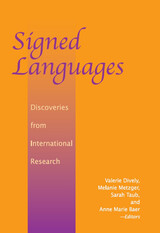 Signed Languages: Discoveries from International Research
Valerie Dively
Gallaudet University Press, 2001 Signed Languages: Discoveries from International Research collects the thirteen freshest, most innovative papers presented at the sixth Theoretical Issues in Sign Language Research conference in 1998, the largest of its kind ever convened. Presented together in this timely compendium, the research reflects the current trend toward focusing on international signed languages that previously have been ignored, including those of Sweden, Israel, Venezuela, and northern Nigeria. The anthology is divided into six sections: Phonology, Morphology and Syntax, Psycholinguistics, Language Acquisition, Sociolinguistics, and Poetics. In Part One, articulatory constraints and the sign language of the Netherlands are addressed. In Part Two, researchers tackle noun classifiers, nonhanded signs, and verb classes in the signed languages of Sweden, the United States, and Israel respectively. Part Three offers the study, "Functional Consequences of Modality: Spatial Coding in Working Memory for Signs." Language acquisition is analyzed in both adult learners and deaf children in Part Four. Part Five reports on the relationship between language and society around the world, focusing particularly on the signed languages of Venezuela and northern Nigeria. Part Six considers the techniques employed in British Sign Language poetry and ASL poetry.
Signets: Reading H.D.
Susan S. Friedman
University of Wisconsin Press, 1991 Signets brings together the best essays of H.D. (Hilda Doolittle). Susan Stanford Friedman and Rachel Blau DuPlessis have gathered the most influential and generative studies of H. D.’s work and complemented them with photobiographical, chronological, and bibliographical portraits unique to this volume.
The essays in Signets span H. D.’s career from the origins of Imagism to late modernism, from the early poems of Sea Garden to the novel HER and the epic poems Trilogy and Helen in Egypt. In addition to the editors, the contributors are Diana Collecott, Robert Duncan, Albert Gelpi, Eileen Gregory, Susan Gubar, Barbara Guest, Elizabeth A. Hirsch, Deborah Kelly Kloepfer, Cassandar Laity, Adalaide Morris, Alicia Ostriker, Cyrena N. Pondrom, Perdita Schaffner, and Louis H. Silverstein.
Signets is an essential resource for those interested in H. D., modernism, and feminist criticism and writing.
The Significance of Sibling Relationships in Literature
Joanna Stephens Mink
University of Wisconsin Press, 1993 This interdisciplinary collection of essays encompasses variations of the sibling paradigm—the single child, brothers and sisters, twins, and sisters and sisterhood. Literary siblings are the focus, but each discussion is placed within the parameters of cultural and social commentary.
The essays bring together studies in the fields of social and family therapy, psychological research, and literary criticism.
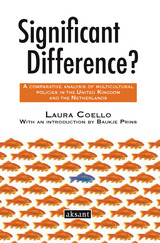 Significant difference? A comparative analysis of multicultural policies in the United Kingdom and the Netherlands
Laura Coello
Amsterdam University Press, 2010 Violent incidents that took place in 2004 and 2005 in the Netherlands and the UK respectively prompted people to claim that multiculturalism had failed. This claim requires an assessment of the effect of the policies that were drafted based on this political philosophy. In this study, the author analyses two sets of policies developed from multiculturalism: policies of anti-discrimination of minorities and their labour market participation. The effect of these policies is assessed by studying the policy objectives and their results.Based on this review, the author concludes that while there is still much to achieve in the fields of anti-discrimination and labour market participation, multiculturalism did not fail in the UK. On the contrary, it created a positive public perception of diversity and a high participation of minorities in the labour market. This contrasts with results achieved in the Netherlands where policies have fluctuated in such a way that the public attitude towards diversity is ambivalent and the participation of minorities in the labour market is much lower than that of their native counterpart.
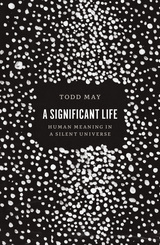 A Significant Life: Human Meaning in a Silent Universe
Todd May
University of Chicago Press, 2015 What makes for a good life, or a beautiful one, or, perhaps most important, a meaningful one? Throughout history most of us have looked to our faith, our relationships, or our deeds for the answer. But in A Significant Life, philosopher Todd May offers an exhilarating new way of thinking about these questions, one deeply attuned to life as it actually is: a work in progress, a journey—and often a narrative. Offering moving accounts of his own life and memories alongside rich engagements with philosophers from Aristotle to Heidegger, he shows us where to find the significance of our lives: in the way we live them.
May starts by looking at the fundamental fact that life unfolds over time, and as it does so, it begins to develop certain qualities, certain themes. Our lives can be marked by intensity, curiosity, perseverance, or many other qualities that become guiding narrative values. These values lend meanings to our lives that are distinct from—but also interact with—the universal values we are taught to cultivate, such as goodness or happiness. Offering a fascinating examination of a broad range of figures—from music icon Jimi Hendrix to civil rights leader Fannie Lou Hamer, from cyclist Lance Armstrong to The Portrait of a Lady’s Ralph Touchett to Claus von Stauffenberg, a German officer who tried to assassinate Hitler—May shows that narrative values offer a rich variety of criteria by which to assess a life, specific to each of us and yet widely available. They offer us a way of reading ourselves, who we are, and who we might like to be.
Clearly and eloquently written, A Significant Life is a recognition and a comfort, a celebration of the deeply human narrative impulse by which we make—even if we don’t realize it—meaning for ourselves. It offers a refreshing way to think of an age-old question, of quite simply, what makes a life worth living.
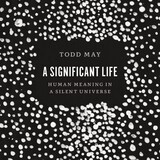 A Significant Life: Human Meaning in a Silent Universe
Todd May
University of Chicago Press, 2015 This is an auto-narrated audiobook edition of this book.
What makes for a good life, or a beautiful one, or, perhaps most important, a meaningful one? Throughout history most of us have looked to our faith, our relationships, or our deeds for the answer. But in A Significant Life, philosopher Todd May offers an exhilarating new way of thinking about these questions, one deeply attuned to life as it actually is: a work in progress, a journey—and often a narrative. Offering moving accounts of his own life and memories alongside rich engagements with philosophers from Aristotle to Heidegger, he shows us where to find the significance of our lives: in the way we live them.
May starts by looking at the fundamental fact that life unfolds over time, and as it does so, it begins to develop certain qualities, certain themes. Our lives can be marked by intensity, curiosity, perseverance, or many other qualities that become guiding narrative values. These values lend meanings to our lives that are distinct from—but also interact with—the universal values we are taught to cultivate, such as goodness or happiness. Offering a fascinating examination of a broad range of figures—from music icon Jimi Hendrix to civil rights leader Fannie Lou Hamer, from cyclist Lance Armstrong to The Portrait of a Lady’s Ralph Touchett to Claus von Stauffenberg, a German officer who tried to assassinate Hitler—May shows that narrative values offer a rich variety of criteria by which to assess a life, specific to each of us and yet widely available. They offer us a way of reading ourselves, who we are, and who we might like to be.
Clearly and eloquently written, A Significant Life is a recognition and a comfort, a celebration of the deeply human narrative impulse by which we make—even if we don’t realize it—meaning for ourselves. It offers a refreshing way to think of an age-old question, of quite simply, what makes a life worth living.
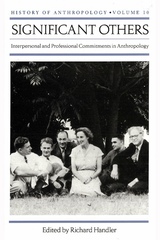 Significant Others: Interpersonal and Professional Commitments in Anthropology
Edited by Richard Handler
University of Wisconsin Press, 2004 Anthropology is by definition about "others," but in this volume the phrase refers not to members of observed cultures, but to "significant others"—spouses, lovers, and others with whom anthropologists have deep relationships that are both personal and professional. The essays in this volume look at the roles of these spouses and partners of anthropologists over the late nineteenth and early twentieth centuries, especially their work as they accompanied the anthropologists in the field. Other relationships discussed include those between anthropologists and informants, mentors and students, cohorts and partners, and parents and children. The book closes with a look at gender roles in the field, demonstrated by the "marriage" in the late nineteenth century of the male Anthropological Society of Washington to the Women’s Anthropological Society of America. Revealing relationships that were simultaneously deeply personal and professionally important, these essays bring a new depth of insight to the history of anthropology as a social science and human endeavor.
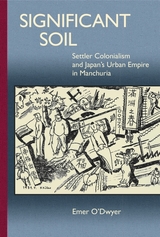 Significant Soil: Settler Colonialism and Japan’s Urban Empire in Manchuria
Emer O’Dwyer
Harvard University Press, 2015 Like all empires, Japan’s prewar empire encompassed diverse territories as well as a variety of political forms for governing such spaces. This book focuses on Japan’s Kwantung Leasehold and Railway Zone in China’s three northeastern provinces. The hybrid nature of the leasehold’s political status vis-à-vis the metropole, the presence of the semipublic and enormously powerful South Manchuria Railway Company, and the region’s vulnerability to inter-imperial rivalries, intra-imperial competition, and Chinese nationalism throughout the first decades of the twentieth century combined to give rise to a distinctive type of settler politics. Settlers sought inclusion within a broad Japanese imperial sphere while successfully utilizing the continental space as a site for political and social innovation.
In this study, Emer O’Dwyer traces the history of Japan’s prewar Manchurian empire over four decades, mapping how South Manchuria—and especially its principal city, Dairen—was naturalized as a Japanese space and revealing how this process ultimately contributed to the success of the Japanese army’s early 1930s takeover of Manchuria. Simultaneously, Significant Soil demonstrates the conditional nature of popular support for Kwantung Army state-building in Manchukuo, highlighting the settlers’ determination that the Kwantung Leasehold and Railway Zone remain separate from the project of total empire.
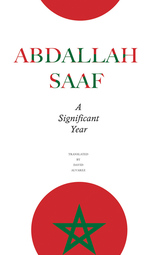 A Significant Year
Abdallah Saaf
Seagull Books, 2018 On the eve of the 2007 general elections in Morocco, writer, academic, and former cabinet minister Abdallah Saaf embarked on several road trips across the country to get a feel for how its citizens had fared since Mohammed VI’s accession to the throne.
A Significant Year is the result: an analysis of the political and sociological state of the Moroccan nation on the eve of a crucial moment in the post–Hassan II period, but also a travelogue that describes what the author saw and heard on his travels in the summer months leading up to the epochal vote. Through Saaf’s eyes, we see the country’s varied regions and its urban and rural landscapes. We meet Moroccans from all walks of life, such as a waiter at a favorite cafe, a car-park attendant who recognizes the author from TV, and fellow writer and intellectual Abdelkabir Khatibi. Behind the deceptive simplicity of the book’s narrative structure, readers will find in A Significant Year an insightful and nuanced portrayal of modern Morocco’s many complexities.
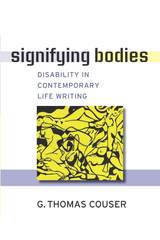 Signifying Bodies: Disability in Contemporary Life Writing
G. Thomas Couser
University of Michigan Press, 2010 "Thomas Couser's Signifying Bodies comes at a crucial moment when debates about physician assisted suicide, genetic engineering, and neo-natal screening are raising the question of what constitutes a 'life worth living' for persons with disabilities. Couser's work engages these debates by exploring the extensive number of personal narratives by or about persons with disabilities. As Couser brilliantly demonstrates through synoptic readings, these works challenge the 'preferred rhetorics' by which such narratives are usually written (triumphalist, gothic, nostalgic) while making visible the variegated nature of embodied life."
---Michael Davidson, University of California, San Diego "Signifying Bodies shows us that life writing about disability is . . . everywhere. . . . From obituary to documentary film to ethnography to literary memoir to the law, the book casts a wide net, detailing how various written and filmed responses to disability both enact and resist conventional narrative patterns. [This] not only broadens our idea about where to look for life writing, but also demonstrates how thoroughly stereotypes about disability mediate our social and artistic languages---even when an author has (so-called) the best intentions."
---Susannah B. Mintz, Skidmore College Memoirs have enjoyed great popularity in recent years, experiencing significant sales, prominent reviews, and diverse readerships. Signifying Bodies shows that at the heart of the memoir phenomenon is our fascination with writing that focuses on what it means to live in, or be, an anomalous body---in other words, what it means to be disabled. Previous literary accounts of the disabled body have often portrayed it as a stable entity possibly signifying moral deviance or divine disfavor, but contemporary writers with disabilities are defining themselves and depicting their bodies in new ways. Using the insights of disability studies and source material ranging from the Old and New Testaments to the works of authors like Lucy Grealy and Simi Linton and including contemporary films such as Million Dollar Baby, G. Thomas Couser sheds light on a broader cultural phenomenon, exploring topics such as the ethical issues involved in disability memoirs, the rhetorical patterns they frequently employ, and the complex relationship between disability narrative and disability law. G. Thomas Couser is Professor of English at Hofstra University.
Signifying Europe
Johan Fornäs
Intellect Books, 2012 Signifying Europe provides a systematic overview of the wide range of symbols used to represent Europe and Europeanness, both by the political elite and the broader public. Through a critical interpretation of the meanings of the various symbols—and their often contradictory or ambiguous dimensions—Johan Fornäs uncovers illuminating insights into how Europe currently identifies itself and is identified by others outside its borders. While the focus is on the European Union’s symbols, those symbols are also interpreted in relation to other symbols of Europe. Offering insight into the cultural dimensions of European unification, this volume will appeal to students, scholars, and politicians interested in European policy issues, cultural studies, and postnational cultural identity.
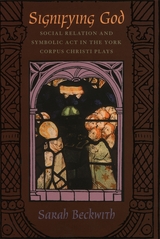 Signifying God: Social Relation and Symbolic Act in the York Corpus Christi Plays
Sarah Beckwith
University of Chicago Press, 2001 In Signifying God, Sarah Beckwith explores the most lavish, long-lasting, and complex form of collective theatrical enterprise in English history: the York Corpus Christi plays. First staged as early as 1376, the plays were performed annually until the late 1500s and involved as much as a tenth of the city in multiple performances at a dozen or more locations.
Introducing a radical new understanding of these plays as "sacramental theater," Beckwith shows how organizing the plays served as a political mechanism for regulating labor, and how theater and sacrament combined in them to do important theological work. She argues, for instance, that the theology of Corpus Christi in the resurrection plays can only be understood as a theatrical exploration of eucharistic absence and presence. Beckwith frames her study with discussions of twentieth-century manifestations of sacramental theater in Barry Unsworth's novel Morality Play and Denys Arcand's film Jesus of Montreal, and the connections between contemporary revivals of the York Corpus Christi plays and England's heritage culture.
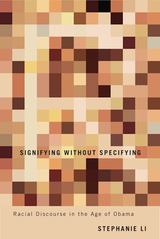 Signifying Without Specifying: Racial Discourse in the Age of Obama
Li, Stephanie
Rutgers University Press, 2011 On the campaign trail, Barack Obama faced a difficult task—rallying African American voters while resisting his opponents’ attempts to frame him as “too black” to govern the nation as a whole. Obama’s solution was to employ what Toni Morrison calls “race-specific, race-free language,” avoiding open discussions of racial issues while using terms and references that carried a specific cultural resonance for African American voters. Stephanie Li argues that American politicians and writers are using a new kind of language to speak about race. Challenging the notion that we have moved into a “post-racial” era, she suggests that we are in an uneasy moment where American public discourse demands that race be seen, but not heard. Analyzing contemporary political speech with nuanced readings of works by such authors as Toni Morrison, Jhumpa Lahiri, and Colson Whitehead, Li investigates how Americans of color have negotiated these tensions, inventing new ways to signal racial affiliations without violating taboos against open discussions of race.
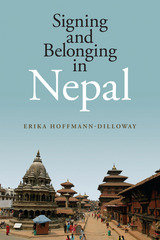 Signing and Belonging in Nepal
Erika Hoffmann-Dilloway
Gallaudet University Press, 2016 While many deaf organizations around the world have adopted an ethno-linguistic framing of deafness, the meanings and consequences of this perspective vary across cultural contexts, and relatively little scholarship exists that explores this framework from an anthropological perspective.
In this book, Erika Hoffmann-Dilloway presents an accessible examination of deafness in Nepal. As a linguistic anthropologist, she describes the emergence of Nepali Sign Language and deaf sociality in the social and historical context of Nepal during the last decades before the Hindu Kingdom became a secular republic. She then shows how the adoption of an ethno-linguistic model interacted with the ritual pollution model, or the prior notion that deafness results from bad karma. Her focus is on the impact of these competing and co-existing understandings of deafness on three groups: signers who adopted deafness as an ethnic identity, homesigners whose ability to adopt that identity is hindered by their difficulties in acquiring Nepali Sign Language, and hearing Nepalis who interact with Deaf signers. Comparing these contexts demonstrates that both the ethno-linguistic model and the ritual pollution model, its seeming foil, draw on the same basic premise: that both persons and larger social formations are mutually constituted through interaction. Signing and Belonging in Nepal is an ethnography that studies a rich and unique Deaf culture while also contributing to larger discussions about social reproduction and social change.
 Signing Fun: American Sign Language Vocabulary, Phrases, Games, and Activities
Penny Warner
Gallaudet University Press, 2006 Here’s a great book for every young adult age 11 up, Signing Fun: American Sign Language Vocabulary, Phrases, Games, and Activities. Signing is visual, easy to learn, and fun to use. Author Penny Warner offers 441 useful signs on a variety of favorite topics: activities, animals, fashion, food, holidays, home, outdoors, parties, people, places, play, emotions, school, shopping, travel, plus extra fun signs for especially popular words. Each chapter includes practice sentences using everyday phrases to help new signers learn in a fun way. Signing Fun provides dozens of entertaining games and activities, too, such as Alphabet Sign, Finger Fun Gesture Guess, Match Signs, Mime and Sign, Oppo-Sign, Picture Hand, Secret Sign, Sign-A-Gories, Signo Bingo, Snap and Sign, and Truth or Sign. It also features a list of tips on how to sign, including how to fingerspell, use numbers, and communicate with deaf people. Whimsical drawings clearly illustrate all of the signs, and a full index lists all of their English meanings for quick reference. Signing Fun is a terrific first book for learning sign while having a great time.
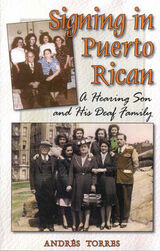 Signing in Puerto Rican: A Hearing Son and His Deaf Family
Andrés Torres
Gallaudet University Press, 2009 The only child of deaf Puerto Rican immigrants, Andrés Torres grew up in New York City in a large, extended family that included several deaf aunts and uncles. In Signing in Puerto Rican: A Hearing Son and His Deaf Family, he opens a window into the little known culture of Deaf Latinos chasing the immigrant American dream. Like many children of deaf adults (codas), Torres loved his parents deeply but also longed to be free from being their interpreter to the hearing world. Torres’s story is unique in that his family communicated in three languages. The gatherings of his family reverberated with “deaf talk,” in sign, Spanish, and English. What might have struck outsiders as a strange chaos of gestures and mixed spoken languages was just normal for his family.
Torres describes his early life as one of conflicting influences in his search for identity. His parents’ deep involvement in the Puerto Rican Society for the Catholic Deaf led him to study for the priesthood. He later left the seminary as his own ambitions took hold. Torres became very active in the Puerto Rico independence party against the backdrop of the Civil Rights movement and protest against the Vietnam War. Throughout these defining events, Torres’s journey never took him too far from his Deaf Puerto Rican family roots and the passion of arms, hands, and fingers filling the air with simultaneous translation and understanding.
Signing With Your Clients
Florence Vold
Gallaudet University Press, 2001 Especially for use with deaf and hard-of-hearing clients, Signing with Your Clients shows how to sign the questions and statements most frequently used by clinicians. More than 500 line drawings illustrate the signs for 237 sentences with translations printed below. Each sentence begins and ends on the same page, and the spiral binding allows pages to be flipped easily, to leave hands free for signing. A special glossary with technical terms allows the creation of original sentences.
Sign-Me-Fine
Laura Greene
Gallaudet University Press, 1989 Written for young adults, Sign-Me-Fine introduces American Sign Language (ASL) and emphasizes how its structure differs from English. Young readers will learn grammatically correct ASL sentences, sign games, and the full beauty of ASL in poetry and music.
Signs
Maurice Merleau-Ponty
Northwestern University Press, 1964 "Speech is a way of tearing out a meaning from an undivided whole."
Thus does Maurice Merleau-Ponty describe speech in this collection of his important writings on the philosophy of expression, composed during the last decade of his life. For him, expression is a category of human behavior and existence much broader than language alone. He maintains that man is essentially expressive, even prior to speaking: in his silence, gestures, and lived behavior.
Signs Across America
Edgar H. Shroyer
Gallaudet University Press, 1984 Signs Across America provides a fascinating and unique look at regional variations in American Sign Language. The authors contacted native signers in 25 states to find out their signs for 130 selected words. The results—more than 1,200 signs—are illustrated in this book. It is an invaluable reference for teachers of American Sign Language that explores the subtle differences in signs from different geographic areas.
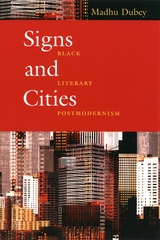 Signs and Cities: Black Literary Postmodernism
Madhu Dubey
University of Chicago Press, 2003 Signs and Cities is the first book to consider what it means to speak of a postmodern moment in African-American literature. Dubey argues that for African-American studies, postmodernity best names a period, beginning in the early 1970s, marked by acute disenchantment with the promises of urban modernity and of print literacy.
Dubey shows how black novelists from the last three decades have reconsidered the modern urban legacy and thus articulated a distinctly African-American strain of postmodernism. She argues that novelists such as Octavia Butler, Samuel Delany, Toni Morrison, Gloria Naylor, Ishmael Reed, Sapphire, and John Edgar Wideman probe the disillusionment of urban modernity through repeated recourse to tropes of the book and scenes of reading and writing. Ultimately, she demonstrates that these writers view the book with profound ambivalence, construing it as an urban medium that cannot recapture the face-to-face communities assumed by oral and folk forms of expression.
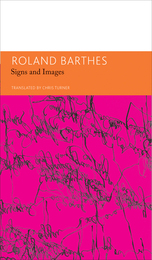 Signs and Images: Writings on Art, Cinema and Photography
Roland Barthes
Seagull Books, 2016 A major collection of essays and interviews from an iconic 20th-century philosopher in five volumes, now all available together in paperback.
Roland Barthes was a restless, protean thinker. A constant innovator—often as a daring smuggler of ideas from one discipline to another—he first gained an audience with his pithy essays on mass culture and then went on to produce some of the most suggestive and stimulating cultural criticism of the late twentieth century, including Empire of Signs, The Pleasure of the Text, and Camera Lucida. In 1976, this one-time structuralist outsider was elected to a chair at France’s preeminent Collège de France, where he chose to style himself as a professor of literary semiology until his death in 1980.
The greater part of Barthes’s published writings has been available to a French audience since 2002, but now, translator Chris Turner presents a collection of essays, interviews, prefaces, book reviews, and other journalistic material for the first time in English and divided into five themed volumes. Volume four, Signs and Images, gathers pieces related to his central concerns—semiotics, visual culture, art, cinema, and photography—and features essays on Marthe Arnould, Lucien Clergue, Daniel Boudinet, Richard Avedon, Bernard Faucon, and many more.
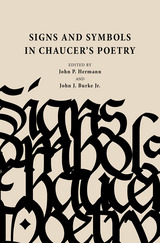 Signs and Symbols in Chaucer's Poetry
John P. Hermann
University of Alabama Press, 1981 Innovative and thorough, Signs and Symbols in Chaucer’s Poetry presents nine essays that reexamine the literary iconography of Middle English. Chaucer’s work is the most well-known, and possibly the most significant, remnant of the Middle Ages; investigations into his writing and meanings are fruitful even today. The essays collected by John P. Hermann and John J. Burke Jr. invite scholars to consider new interpretations of old symbols while acknowledging the intricacies of historical context.
Each highly distinguished scholar responds to D. W. Robertson’s seminal, if controversial, approach to Chaucer’s work. Robertson’s scholarship, which also provides the opening essay of the collection, uses a historicist approach to contextualize Chaucer’s imagery within the literary and cultural conventions of the Middle Ages. Sources for such contextualization include etymology, topology, the classics, pictorial art, the Bible, and the developing sciences of the time. Robertson, as well as his contemporary Bernard F. Huppé, provided a fascinating new direction for modern Chaucer studies that focused on daily life.
Each essay uses this approach to draw attention to various examples of Chaucer’s iconography. The texts span several of Chaucer’s works and a plethora of subjects, including music, disappointed expectations, repeated or conflicting signs, and more. This volume provides insight into Chaucer’s work as well as the Middle Ages as a whole, examining conventions and expectations of society at that time. Scholars, instructors, and lovers of Chaucer will all find value in this finely edited collection.
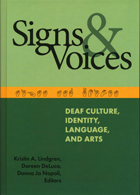 Signs and Voices: Deaf Culture, Identity, Language, and Arts
Kristin A. Lindgren
Gallaudet University Press, 2008 Cochlear implants, mainstreaming, genetic engineering, and other ethical dilemmas confronting deaf people mandated a new, wide-ranging examination of these issues, fulfilled by Signs and Voices: Deaf Culture, Identity, Language, and Arts. This collection, carefully chosen from the 2004 Signs and Voices Conference, the Presidential Forum on American Sign Language at the Modern Language Association Convention, and other sources, addresses all of the factors now changing the cultural landscape for deaf people. To ensure quality and breadth of knowledge, editors Kristin A. Lingren, Doreen DeLuca, and Donna Jo Napoli selected the work of renowned scholars and performers Shannon Allen, H-Dirksen L. Bauman, Adrian Blue, Brenda Jo Brueggemann, Teresa Blankmeyer Burke, Peter Cook, David P. Corina, Michael Davidson, Kristen Harmon, Tom Humphries, Sotaro Kita, Heather Knapp, Robert G. Lee, Irene W. Leigh, Kenny Lerner, Carole Neidle, Peter Novak, AslI Özyürek, David M. Perlmutter, Anne Senghas, and Ronnie Wilbur.
Signs and Voices is divided into three sections—Culture and Identity, Language and Literacy, and American Sign Language in the Arts—each of which focuses on a particular set of theoretical and practical concerns. Also, the included DVD presents many of the performances from the Arts section. Taken together, these essays and DVD point to new directions in a broad range of fields, including cognitive science, deaf studies, disability studies, education, linguistics, literary criticism, philosophy, and psychology. This extraordinary showcase of innovative and rigorous cross-disciplinary study will prove invaluable to everyone interested in the current state of the Deaf community.
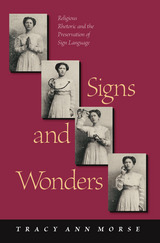 Signs and Wonders: Religious Rhetoric and the Preservation of Sign Language
Tracy Ann Morse
Gallaudet University Press, 2014 Current academic discourse frequently understates the role of religion in the development of the American Deaf community. In her new study, Tracy Ann Morse effects a sharp course correction by delineating the frequent use over time of religious rhetoric by members of the Deaf community to preserve and support sign language.
In Chapter One, Morse analyzes Thomas Hopkins Gallaudet’s use of religious references in his 1817 maiden address at the first American school for deaf students. She examines his and other speeches as examples of the intersection of education for deaf Americans and Protestant missionary efforts to convert them. In the second chapter, she presents the different religious perspectives of the two deaf education camps: Manualists argued that sign language was a gift from God, while Oralists viewed hand gestures as animal-like, indicative of lower evolutionary development.
Chapter Three explores the religious rhetoric in churches, sanctuaries where sign language flourished and deaf members formed relationships. In the fourth chapter, Morse shows how Deaf activist George Veditz signed using religious themes in his political films. She also comments on the impact of the bilingual staging of Big River: The Adventures of Huckleberry Finn, which began to change the hearing world’s opinion about the Deaf community. Morse concludes with speculation on the shifting terrain for deaf people due to technological innovations that might supplant religious rhetoric as a tool to support the Deaf community.
 Signs, Cures, and Witchery: German Appalachian Folklore
Gerald C. Milnes
University of Tennessee Press, 2012
Signs, Cures, & Witchery provides a fascinating glimpse of some little-known Appalachian beliefs and practices among descendants of early German pioneers. Signs, Cures and Witchery opens a window into our ancient past, revealing the courage and resourcefulness of people whose survival depended on their ability to "read signs," cure their own ills, and find explanations for life's mysteries. Local community practices in West Virginia such as witch doctoring, "belsnickling," "shanghai," and folk healing are connected to their medieval counterparts in woodcuts and other works of art. In tracing immigration to remote mountain communities, we learn how expressions of folk art and folk belief survive. This work specifically examines aspects of Appalachian oral tradition and folklore that draw from German culture. Informative and entertaining, Signs, Cures, and Witchery is an invaluable aid to all who have an interest in religion, psychology, folklore, metaphysical, regional, gender, and ethnic studies.
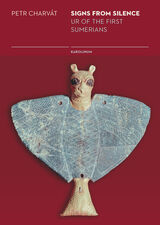 Signs from Silence: Ur of the First Sumerians
Petr Charvát
Karolinum Press, 2015 The Royal Tombs of Ur, dating from approximately 3000–2700 BCE, are among the most famous and impressive archeological discoveries of the twentieth century. Excavated between 1922 and 1934 under the direction of Leonard Woolley, this site is one of the richest sources of information we have about ancient Sumer—however, many mysteries about the society that produced these tombs remain. Based on primary research with the Ur materials at the University of Pennsylvania Museum of Archeology and Anthropology, and paying particular attention to the iconography found in what Woolley referred to as the “Seal Impression Strata of Ur,” this book works to reconstruct the early history of Sumer. What was this society like? What social structures did this society build? What were its institutions of authority? The answers Petr Charvát proposes are of interest not only to archeologists, but to anyone fascinated by early human history.
Signs in America's Auto Age: Signatures of Landscape and Place
John A. & Keith A. Jakle & Sculle
University of Iowa Press, 2004 Signs orient, inform, persuade, and regulate. They help give meaning to our natural and human-built environment, to landscape and place. In Signs in America’s Auto Age, cultural geographer John Jakle and historian Keith Sculle explore the ways in which we take meaning from outdoor signs and assign meaning to our surroundings—the ways we “read” landscape. With an emphasis on how the use of signs changed as the nation’s geography reorganized around the coming of the automobile, Jakle and Sculle consider the vast array of signs that have evolved since the beginning of the twentieth century.
 Signs In Culture: Roland Barthes Today
Steven Ungar
University of Iowa Press, 1989 Roland Barthes's critical writings promoted postwar movements ranging from the New Novel to the Parisian version of structural analysis. As a theorist, he was inspired in large part by semiology, the general science of signs set forth in the work of Ferdinand de Saussure. This volume presents a challenging variety of essays that elaborate and comment on specific elements in the evolution of Barthes's study of signs, from the revolutionary semiology of his 1957 Mythologies to the semioclasm and semiotrophy of such post-1960s' books as S/Z, The Pleasure of the Text, and A Lover's Discourse. The nine essays of Signs in Culture have been organized to express the striking interplay of language and writing as the ethics of form Barthes first described in his 1953 Writing Degree Zero. Each essay serves as a pivotal critical exercise beginning with or departing from Barthes's writing. Each essayist thus engages an expanded semiology which inscribes the life of signs within the institutions and practices that literary critics, philosophers, and historians alike have seen as constituting the elements of a cultural study and critique.
Signs: Journal of Women in Culture and Society, volume 45 number 2 (Winter 2020)
The University of Chicago Press
University of Chicago Press Journals, 2020 This is volume 45 issue 2 of Signs: Journal of Women in Culture and Society. Recognized as the leading international journal in women's studies, Signs is at the forefront of new directions in feminist scholarship. The journal publishes pathbreaking articles, review essays, comparative perspectives, and retrospectives of interdisciplinary interest addressing gender, race, culture, class, nation, and sexuality. Special issue and section topics cover a broad range of geopolitical processes, conditions, and effects; cultural and social configurations; and scholarly and theoretical developments.
Signs: Journal of Women in Culture and Society, volume 45 number 3 (Spring 2020)
The University of Chicago Press
University of Chicago Press Journals, 2020 This is volume 45 issue 3 of Signs: Journal of Women in Culture and Society. Recognized as the leading international journal in women's studies, Signs is at the forefront of new directions in feminist scholarship. The journal publishes pathbreaking articles, review essays, comparative perspectives, and retrospectives of interdisciplinary interest addressing gender, race, culture, class, nation, and sexuality. Special issue and section topics cover a broad range of geopolitical processes, conditions, and effects; cultural and social configurations; and scholarly and theoretical developments.
Signs: Journal of Women in Culture and Society, volume 45 number 4 (Summer 2020)
The University of Chicago Press
University of Chicago Press Journals, 2020 This is volume 45 issue 4 of Signs: Journal of Women in Culture and Society. Recognized as the leading international journal in women's studies, Signs is at the forefront of new directions in feminist scholarship. The journal publishes pathbreaking articles, review essays, comparative perspectives, and retrospectives of interdisciplinary interest addressing gender, race, culture, class, nation, and sexuality. Special issue and section topics cover a broad range of geopolitical processes, conditions, and effects; cultural and social configurations; and scholarly and theoretical developments.
Signs: Journal of Women in Culture and Society, volume 46 number 1 (Autumn 2020)
The University of Chicago Press
University of Chicago Press Journals, 2020 This is volume 46 issue 1 of Signs: Journal of Women in Culture and Society. Recognized as the leading international journal in women's studies, Signs is at the forefront of new directions in feminist scholarship. The journal publishes pathbreaking articles, review essays, comparative perspectives, and retrospectives of interdisciplinary interest addressing gender, race, culture, class, nation, and sexuality. Special issue and section topics cover a broad range of geopolitical processes, conditions, and effects; cultural and social configurations; and scholarly and theoretical developments.
Signs: Journal of Women in Culture and Society, volume 46 number 2 (Winter 2021)
The University of Chicago Press
University of Chicago Press Journals, 2021 This is volume 46 issue 2 of Signs: Journal of Women in Culture and Society. Recognized as the leading international journal in women's studies, Signs is at the forefront of new directions in feminist scholarship. The journal publishes pathbreaking articles, review essays, comparative perspectives, and retrospectives of interdisciplinary interest addressing gender, race, culture, class, nation, and sexuality. Special issue and section topics cover a broad range of geopolitical processes, conditions, and effects; cultural and social configurations; and scholarly and theoretical developments.
Signs: Journal of Women in Culture and Society, volume 46 number 3 (Spring 2021)
The University of Chicago Press
University of Chicago Press Journals, 2021 This is volume 46 issue 3 of Signs: Journal of Women in Culture and Society. Recognized as the leading international journal in women's studies, Signs is at the forefront of new directions in feminist scholarship. The journal publishes pathbreaking articles, review essays, comparative perspectives, and retrospectives of interdisciplinary interest addressing gender, race, culture, class, nation, and sexuality. Special issue and section topics cover a broad range of geopolitical processes, conditions, and effects; cultural and social configurations; and scholarly and theoretical developments.
Signs: Journal of Women in Culture and Society, volume 46 number 4 (Summer 2021)
The University of Chicago Press
University of Chicago Press Journals, 2021 This is volume 46 issue 4 of Signs: Journal of Women in Culture and Society. Recognized as the leading international journal in women's studies, Signs is at the forefront of new directions in feminist scholarship. The journal publishes pathbreaking articles, review essays, comparative perspectives, and retrospectives of interdisciplinary interest addressing gender, race, culture, class, nation, and sexuality. Special issue and section topics cover a broad range of geopolitical processes, conditions, and effects; cultural and social configurations; and scholarly and theoretical developments.
Signs: Journal of Women in Culture and Society, volume 47 number 1 (Autumn 2021)
The University of Chicago Press
University of Chicago Press Journals, 2021 This is volume 47 issue 1 of Signs: Journal of Women in Culture and Society. Recognized as the leading international journal in women's studies, Signs is at the forefront of new directions in feminist scholarship. The journal publishes pathbreaking articles, review essays, comparative perspectives, and retrospectives of interdisciplinary interest addressing gender, race, culture, class, nation, and sexuality. Special issue and section topics cover a broad range of geopolitical processes, conditions, and effects; cultural and social configurations; and scholarly and theoretical developments.
Signs: Journal of Women in Culture and Society, volume 47 number 2 (Winter 2022)
The University of Chicago Press
University of Chicago Press Journals, 2022 This is volume 47 issue 2 of Signs: Journal of Women in Culture and Society. Recognized as the leading international journal in women's studies, Signs is at the forefront of new directions in feminist scholarship. The journal publishes pathbreaking articles, review essays, comparative perspectives, and retrospectives of interdisciplinary interest addressing gender, race, culture, class, nation, and sexuality. Special issue and section topics cover a broad range of geopolitical processes, conditions, and effects; cultural and social configurations; and scholarly and theoretical developments.
Signs: Journal of Women in Culture and Society, volume 47 number 3 (Spring 2022)
The University of Chicago Press
University of Chicago Press Journals, 2022 This is volume 47 issue 3 of Signs: Journal of Women in Culture and Society. Recognized as the leading international journal in women's studies, Signs is at the forefront of new directions in feminist scholarship. The journal publishes pathbreaking articles, review essays, comparative perspectives, and retrospectives of interdisciplinary interest addressing gender, race, culture, class, nation, and sexuality. Special issue and section topics cover a broad range of geopolitical processes, conditions, and effects; cultural and social configurations; and scholarly and theoretical developments.
Signs: Journal of Women in Culture and Society, volume 47 number 4 (Summer 2022)
The University of Chicago Press
University of Chicago Press Journals, 2022 This is volume 47 issue 4 of Signs: Journal of Women in Culture and Society. Recognized as the leading international journal in women's studies, Signs is at the forefront of new directions in feminist scholarship. The journal publishes pathbreaking articles, review essays, comparative perspectives, and retrospectives of interdisciplinary interest addressing gender, race, culture, class, nation, and sexuality. Special issue and section topics cover a broad range of geopolitical processes, conditions, and effects; cultural and social configurations; and scholarly and theoretical developments.
Signs: Journal of Women in Culture and Society, volume 48 number 1 (Autumn 2022)
The University of Chicago Press
University of Chicago Press Journals, 2022 This is volume 48 issue 1 of Signs: Journal of Women in Culture and Society. Recognized as the leading international journal in women's studies, Signs is at the forefront of new directions in feminist scholarship. The journal publishes pathbreaking articles, review essays, comparative perspectives, and retrospectives of interdisciplinary interest addressing gender, race, culture, class, nation, and sexuality. Special issue and section topics cover a broad range of geopolitical processes, conditions, and effects; cultural and social configurations; and scholarly and theoretical developments.
Signs: Journal of Women in Culture and Society, volume 48 number 2 (Winter 2023)
The University of Chicago Press
University of Chicago Press Journals, 2023 This is volume 48 issue 2 of Signs: Journal of Women in Culture and Society. Recognized as the leading international journal in women's studies, Signs is at the forefront of new directions in feminist scholarship. The journal publishes pathbreaking articles, review essays, comparative perspectives, and retrospectives of interdisciplinary interest addressing gender, race, culture, class, nation, and sexuality. Special issue and section topics cover a broad range of geopolitical processes, conditions, and effects; cultural and social configurations; and scholarly and theoretical developments.
Signs: Journal of Women in Culture and Society, volume 48 number 3 (Spring 2023)
The University of Chicago Press
University of Chicago Press Journals, 2023 This is volume 48 issue 3 of Signs: Journal of Women in Culture and Society. Recognized as the leading international journal in women's studies, Signs is at the forefront of new directions in feminist scholarship. The journal publishes pathbreaking articles, review essays, comparative perspectives, and retrospectives of interdisciplinary interest addressing gender, race, culture, class, nation, and sexuality. Special issue and section topics cover a broad range of geopolitical processes, conditions, and effects; cultural and social configurations; and scholarly and theoretical developments.
Signs: Journal of Women in Culture and Society, volume 48 number 4 (Summer 2023)
The University of Chicago Press
University of Chicago Press Journals, 2023 This is volume 48 issue 4 of Signs: Journal of Women in Culture and Society. Recognized as the leading international journal in women's studies, Signs is at the forefront of new directions in feminist scholarship. The journal publishes pathbreaking articles, review essays, comparative perspectives, and retrospectives of interdisciplinary interest addressing gender, race, culture, class, nation, and sexuality. Special issue and section topics cover a broad range of geopolitical processes, conditions, and effects; cultural and social configurations; and scholarly and theoretical developments.
Signs: Journal of Women in Culture and Society, volume 49 number 1 (Autumn 2023)
The University of Chicago Press
University of Chicago Press Journals, 2023 This is volume 49 issue 1 of Signs: Journal of Women in Culture and Society. Recognized as the leading international journal in women's studies, Signs is at the forefront of new directions in feminist scholarship. The journal publishes pathbreaking articles, review essays, comparative perspectives, and retrospectives of interdisciplinary interest addressing gender, race, culture, class, nation, and sexuality. Special issue and section topics cover a broad range of geopolitical processes, conditions, and effects; cultural and social configurations; and scholarly and theoretical developments.
Signs: Journal of Women in Culture and Society, volume 49 number 2 (Winter 2024)
The University of Chicago Press
University of Chicago Press Journals, 2024 This is volume 49 issue 2 of Signs: Journal of Women in Culture and Society. Recognized as the leading international journal in women's studies, Signs is at the forefront of new directions in feminist scholarship. The journal publishes pathbreaking articles, review essays, comparative perspectives, and retrospectives of interdisciplinary interest addressing gender, race, culture, class, nation, and sexuality. Special issue and section topics cover a broad range of geopolitical processes, conditions, and effects; cultural and social configurations; and scholarly and theoretical developments.
Signs: Journal of Women in Culture and Society, volume 49 number 3 (Spring 2024)
The University of Chicago Press
University of Chicago Press Journals, 2024 This is volume 49 issue 3 of Signs: Journal of Women in Culture and Society. Recognized as the leading international journal in women's studies, Signs is at the forefront of new directions in feminist scholarship. The journal publishes pathbreaking articles, review essays, comparative perspectives, and retrospectives of interdisciplinary interest addressing gender, race, culture, class, nation, and sexuality. Special issue and section topics cover a broad range of geopolitical processes, conditions, and effects; cultural and social configurations; and scholarly and theoretical developments.
Signs: Journal of Women in Culture and Society, volume 49 number 4 (Summer 2024)
The University of Chicago Press
University of Chicago Press Journals, 2024 This is volume 49 issue 4 of Signs: Journal of Women in Culture and Society. Recognized as the leading international journal in women's studies, Signs is at the forefront of new directions in feminist scholarship. The journal publishes pathbreaking articles, review essays, comparative perspectives, and retrospectives of interdisciplinary interest addressing gender, race, culture, class, nation, and sexuality. Special issue and section topics cover a broad range of geopolitical processes, conditions, and effects; cultural and social configurations; and scholarly and theoretical developments.
Signs: Journal of Women in Culture and Society, volume 50 number 1 (Autumn 2024)
The University of Chicago Press
University of Chicago Press Journals, 2024 This is volume 50 issue 1 of Signs: Journal of Women in Culture and Society. Recognized as the leading international journal in women's studies, Signs is at the forefront of new directions in feminist scholarship. The journal publishes pathbreaking articles, review essays, comparative perspectives, and retrospectives of interdisciplinary interest addressing gender, race, culture, class, nation, and sexuality. Special issue and section topics cover a broad range of geopolitical processes, conditions, and effects; cultural and social configurations; and scholarly and theoretical developments.
Signs: Journal of Women in Culture and Society, volume 50 number 2 (Winter 2025)
The University of Chicago Press
University of Chicago Press Journals, 2025 This is volume 50 issue 2 of Signs: Journal of Women in Culture and Society. Recognized as the leading international journal in women's studies, Signs is at the forefront of new directions in feminist scholarship. The journal publishes pathbreaking articles, review essays, comparative perspectives, and retrospectives of interdisciplinary interest addressing gender, race, culture, class, nation, and sexuality. Special issue and section topics cover a broad range of geopolitical processes, conditions, and effects; cultural and social configurations; and scholarly and theoretical developments.
Signs: Journal of Women in Culture and Society, volume 50 number 3 (Spring 2025)
The University of Chicago Press
University of Chicago Press Journals, 2025 This is volume 50 issue 3 of Signs: Journal of Women in Culture and Society. Recognized as the leading international journal in women's studies, Signs is at the forefront of new directions in feminist scholarship. The journal publishes pathbreaking articles, review essays, comparative perspectives, and retrospectives of interdisciplinary interest addressing gender, race, culture, class, nation, and sexuality. Special issue and section topics cover a broad range of geopolitical processes, conditions, and effects; cultural and social configurations; and scholarly and theoretical developments.
Signs: Journal of Women in Culture and Society, volume 50 number 4 (Summer 2025)
The University of Chicago Press
University of Chicago Press Journals, 2025 This is volume 50 issue 4 of Signs: Journal of Women in Culture and Society. Recognized as the leading international journal in women's studies, Signs is at the forefront of new directions in feminist scholarship. The journal publishes pathbreaking articles, review essays, comparative perspectives, and retrospectives of interdisciplinary interest addressing gender, race, culture, class, nation, and sexuality. Special issue and section topics cover a broad range of geopolitical processes, conditions, and effects; cultural and social configurations; and scholarly and theoretical developments.
Signs: Journal of Women in Culture and Society, volume 51 number 1 (Autumn 2025)
The University of Chicago Press
University of Chicago Press Journals, 2025 This is volume 51 issue 1 of Signs: Journal of Women in Culture and Society. Recognized as the leading international journal in women's studies, Signs is at the forefront of new directions in feminist scholarship. The journal publishes pathbreaking articles, review essays, comparative perspectives, and retrospectives of interdisciplinary interest addressing gender, race, culture, class, nation, and sexuality. Special issue and section topics cover a broad range of geopolitical processes, conditions, and effects; cultural and social configurations; and scholarly and theoretical developments.
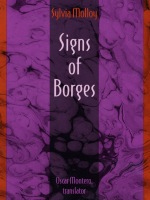 Signs of Borges
Sylvia Molloy
Duke University Press, 1994 Available for the first time in English, Signs of Borges is widely regarded as the best single book on the work of Jorge Luis Borges. With a critical sensibility informed by Barthes, Lacan, Foucault, Blanchot, and the entire body of Borges scholarship, Sylvia Molloy explores the problem of meaning in Borges's work by remaining true to the uncanniness that is its foundation.
Borges's sustained practice of the uncanny gives rise in his texts to endless tensions between illusion and meaning, and to the competing desires for fragmentation, dispersal, and stability. Molloy traces the movement of Borges's own writing by repeatedly spanning the boundaries of genre and cutting across the conventional separations of narrative, lyric and essay, fact and fiction. Rather than seeking to resolve the tensions and conflicts, she preserves and develops them, thereby maintaining the potential of these texts to disturb. At the site of these tensions, Molloy locates the play between meaning and meaninglessness that occurs in Borges's texts. From this vantage point his strategies of deception, recourse to simulacra, inquisitorial urge to unsettle binarism, and distrust of the permanent--all that makes Borges Borges--are examined with unmatched skill and acuity.
Elegantly written and translated, Signs of Borges presents a remarkable and dynamic view of one of the most international and compelling writers of this century. It will be of great interest to all students of twentieth-century literature, particularly to students of Latin American literature.
Signs of Change: New Directions in Theatre Education
Joan Lazarus
Intellect Books, 2012 There is no one-size-fits-all way to keep pace with the changes affecting students and those who educate them. That’s why Joan Lazarus has gathered here the insights of hundreds of theater teachers and teaching artists on how they have responded to the shifting demands of theater education in today’s schools. She paints a portrait of active, dynamic professionals who build vibrant programs and confront challenges in a variety of ways—from inclusive, interactive lessons to comprehensive programs that address the impact of poverty, race, gender, and spirituality on students’ lives. In the process, she shows how real teachers bring about real change. An accessible and up-to-date guide to best practices in theater education, this expanded and revised edition encompasses new hands-on activities—drawn from the author’s in-depth interviews and research.
 Signs Of Danger: Waste, Trauma, and Nuclear Threat
Peter C. Van Wyck
University of Minnesota Press, 2004 Questions the literal burying of the nuclear threat and how it relates to expectations for our future A rising ocean. A falling building. A toxic river. Species extinguished. A nuclear landscape. In a world so configured, the state of contemporary ecological thought and practice is woefully—and perilously—inadequate. Focusing on the government’s nuclear waste burial program in Carlsbad, New Mexico, Signs of Danger begins the urgent work of finding a new way of thinking about ecological threat in our time. The Waste Isolation Pilot Plant in Carlsbad began receiving shipments in 1999. With a proposed closing date of 2030, this repository for nuclear waste must be secured with a sign, the purpose of which will be to keep people away for three hundred generations. In the official documents uncovered by Peter van Wyck, we encounter a government bureaucracy approaching the issue of nuclear waste as a technical problem only to find itself confronting a host of intractable philosophical issues concerning language, culture, and history. Signs of Danger plumbs these depths as it shows us how the problem raised in the desert of New Mexico is actually the problem of a culture grappling with ecological threats and with questions of the limits of meaning and representation in the deep future. The reflections at the center of this book—on memory, trauma, disaster, representation, and the virtual—are aimed at defining the uniquely modern status of environmental and nuclear threats. They offer invaluable insights into the interface of where culture ends and nature begins, and how such a juncture is closely linked with questions of risk, concepts of history, and the cultural experience of time.Winner of the 2005 Gertrude J. Robinson Book Prize of the Canadian Communication Association
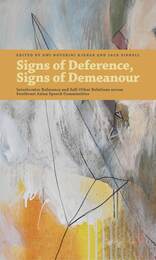 Signs of Deference, Signs of Demeanour: Interlocutor Reference and Self-Other Relations across Southeast Asian Speech Communities
Edited by Dwi Noverini Djenar and Jack Sidnell
National University of Singapore Press, 2022 A study of interlocutor reference that significantly deepens our understanding of the ways in which self-other relations are linguistically mediated in social interaction, based on the analysis of Southeast Asian languages.
Terms used by speakers to refer to themselves and their interlocutors form one of the ways that language expresses, defines, and creates a field for working out social relations. Because this field of study in sociolinguistics historically has focused on Indo-European languages, it has tended to dwell on references to the addressee—for example, the choice between tu and vous when addressing someone in French. This book uses the study of Southeast Asian languages to theorize interlocutor reference more broadly, significantly deepening our understanding of the ways in which self-other relations are linguistically mediated in social interaction. As the authors explain, Southeast Asian systems exceed in complexity and nuance the well-described cases of Europe in two basic ways. First, in many languages of Southeast Asia, a speaker must select an appropriate reference form not only for other/addressee but also for self/speaker. Second, in these languages, in addition to pronouns, speakers draw upon a range of common and proper nouns including names, kin terms, and titles, in referring to themselves and the addressee. Acts of interlocutor reference, therefore, inevitably do more than simply identify the speaker and addressee; they also convey information about the proposed relation between interlocutors. Bringing together studies from both small-scale and large, urbanized communities across Mainland and Insular Southeast Asia, this is an important contribution to the regional linguistic and anthropological literature.
The Signs of Language
Edward Klima
Harvard University Press, 1979 In a book with far-reaching implications, Edward S. Klima and Ursula Bellugi present a full exploration of a language in another mode—a language of the hands and of the eyes. They discuss the origin and development of American Sign Language, the internal structure of its basic units, the grammatical processes it employs, and its heightened use in poetry and wit. The authors draw on research, much of it by and with deaf people, to answer the crucial question of what is fundamental to language as language and what is determined by the mode (vocal or gestural) in which a language is produced.
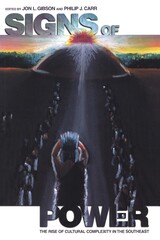 Signs of Power: The Rise of Cultural Complexity in the Southeast
Edited by Jon L. Gibson and Philip J. Carr
University of Alabama Press, 2004 Traces the sources of power and large-scale organization of prehistoric peoples among Archaic societies.
By focusing on the first instances of mound building, pottery making, fancy polished stone and bone, as well as specialized chipped stone, artifacts, and their widespread exchange, this book explores the sources of power and organization among Archaic societies. It investigates the origins of these technologies and their effects on long-term (evolutionary) and short-term (historical) change.
The characteristics of first origins in social complexity belong to 5,000- to 6,000-year-old Archaic groups who inhabited the southeastern United States. In Signs of Power, regional specialists identify the conditions, causes, and consequences that define organization and social complexity in societies. Often termed "big mound power," these considerations include the role of demography, kinship, and ecology in sociocultural change; the meaning of geometry and design in sacred groupings; the degree of advancement in stone tool technologies; and differentials in shell ring sizes that reflect social inequality.
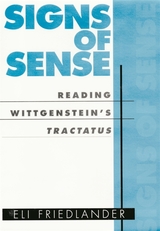 Signs of Sense: Reading Wittgenstein’s Tractatus
Eli Friedlander
Harvard University Press, 2001 This work seeks to shed light on one of the most enigmatic masterpieces of twentieth-century thought. At the heart of Eli Friedlander's interpretation is the internal relation between the logical and the ethical in the Tractatus, a relation that emerges in the work of drawing the limits of language.
To show how the Tractatus, far from separating the ethical and the logical into distinct domains, instead brings out their essential affinity, Friedlander focuses on Wittgenstein's use of the term "form," particularly his characterization of the form of objects. In this reading, the concept of form points to a threefold distinction in the text among the problematics of facts, objects, and the world. Most important, it provides a key to understanding how Wittgenstein's work opens a perspective on the world through the recognition of the form of objects rather than through the grasping of facts—thus revealing the dimensions of subjectivity involved in having a world, or in assuming that form of experience apart from systematic logic.
Bearing on the question of the divide between analytic and Continental philosophy, this interpretation views Wittgenstein's work as a possible mediation between these two central philosophical traditions of the modern age. It will interest Wittgenstein scholars as well as anyone concerned with twentieth-century philosophy.
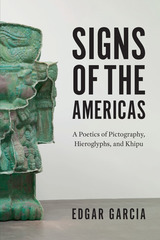 Signs of the Americas: A Poetics of Pictography, Hieroglyphs, and Khipu
Edgar Garcia
University of Chicago Press, 2020 Indigenous sign-systems, such as pictographs, petroglyphs, hieroglyphs, and khipu, are usually understood as relics from an inaccessible past. That is far from the truth, however, as Edgar Garcia makes clear in Signs of the Americas. Rather than being dead languages, these sign-systems have always been living, evolving signifiers, responsive to their circumstances and able to continuously redefine themselves and the nature of the world.
Garcia tells the story of the present life of these sign-systems, examining the contemporary impact they have had on poetry, prose, visual art, legal philosophy, political activism, and environmental thinking. In doing so, he brings together a wide range of indigenous and non-indigenous authors and artists of the Americas, from Aztec priests and Amazonian shamans to Simon Ortiz, Gerald Vizenor, Jaime de Angulo, Charles Olson, Cy Twombly, Gloria Anzaldúa, William Burroughs, Louise Erdrich, Cecilia Vicuña, and many others. From these sources, Garcia depicts the culture of a modern, interconnected hemisphere, revealing that while these “signs of the Americas” have suffered expropriation, misuse, and mistranslation, they have also created their own systems of knowing and being. These indigenous systems help us to rethink categories of race, gender, nationalism, and history. Producing a new way of thinking about our interconnected hemisphere, this ambitious, energizing book redefines what constitutes a “world” in world literature.
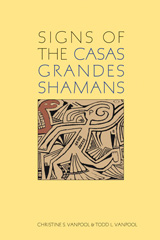 Signs of the Casas Grandes Shamans
VanPool Christine & Todd
University of Utah Press, 2007 Casas Grandes, or Paquimé, in northern Chihuahua, Mexico, was home to a religious system that swept across northern Mexico and what is now the southern United States between AD 1200 and 1450. To commemorate this religion the people of Casas Grandes created striking polychrome pots with black and red geometric and naturalistic designs on a cream base. Their pottery provides a window to Casas Grandes cosmology.
Looking through this window, authors Christine and Todd VanPool find a world centered on shamans who took spiritual journeys to consort with supernatural creatures. The shamans called upon horned serpents to bring rain, the lifeblood for farmers living in the Chihuahuan desert; dealt with snakes that held powers more potent than their bites; and raised, sacrificed, and buried macaws as ritual offerings to ensure water and fertility.
These findings challenge long-held beliefs about Southwestern religion and force a reconsideration of the importance of shamanism in the development of social differentiation in societies around the world.
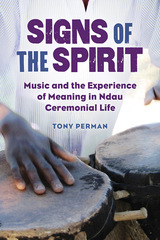 Signs of the Spirit: Music and the Experience of Meaning in Ndau Ceremonial Life
Tony Perman
University of Illinois Press, 2020 In 2005, Tony Perman attended a ceremony alongside the living and the dead. His visit to a Zimbabwe farm brought him into contact with the madhlozi, outsider spirits that Ndau people rely upon for guidance, protection, and their collective prosperity. Perman's encounters with the spirits, the mediums who bring them back, and the accompanying rituals form the heart of his ethnographic account of how the Ndau experience ceremonial musicking. As Perman witnessed other ceremonies, he discovered that music and dancing shape the emotional lives of Ndau individuals by inviting them to experience life's milestones or cope with its misfortunes as a group. Signs of the Spirit explores the historical, spiritual, and social roots of ceremonial action and details how that action influences the Ndau's collective approach to their future. The result is a vivid ethnomusicological journey that delves into the immediacy of musical experience and the forces that transform ceremonial performance into emotions and community.
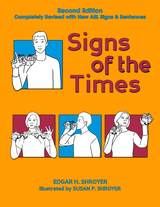 Signs of the Times
Edgar H. Shroyer
Gallaudet University Press, 2011 •Completely Revised with New Signs and Lessons
•Each Sign Illustration Features Sentences in English and ASL Order
•New Class Activities and New Student Activities for Homework or Quizzes
•New Facts about American Sign Language Grammar and Deaf Culture
Now, the bestselling American Sign Language textbook Signs of the Times has been completely revised and updated. The new, second edition is an excellent beginner’s American Sign Language textbook designed for use in the classroom or at home. Organized into 44 lessons, it presents more than 1,300 signs representing 3,500 English glosses. Each lesson contains clear illustrations of all signs, English equivalent words and synonyms, sample sentences to define vocabulary context, and practice sentences to display and reinforce ASL usage. Signs of the Times is a complete text that includes new class activities for teachers, plus new student activities that can be done in class, as homework, or as quizzes. The new edition features the Contextual Sign/Word Appendix, which displays groups of sentences using the same English word to show different meanings along with the corresponding ASL signs. It also provides an expanded index, vocabulary lists, and a reading reference list. The new edition offers facts on ASL grammar and Deaf culture and includes mind ticklers that enliven the lessons with hints, tips, and mnemonic devices. The new Signs of the Times expands the features that made it a standard, easy-to-use ASL textbook. Signs are repeated in sentences throughout the book to provide excellent practice for the students. The clear, easy-to-understand sign illustrations facilitates the learning process, enhancing students’ success while also making ASL fun.
The Signs Reader: Women, Gender, and Scholarship
Edited by Elizabeth Abel and Emily K. Abel
University of Chicago Press, 1983 Selected from the first thirty issues of Signs: Journal of Women in Culture and Society, the thirteen articles in this volume indicate salient trends in feminist scholarship since 1975. Covering a wide variety of disciplines, this collection is representative of that scholarship, which has permanently altered accustomed patterns of thought by challenging basic theoretical frameworks in many academic disciplines. The contributors to this volume are Joan Kelly-Gadol, Carroll Smith-Rosenberg, Fatima Mernissi, Myra Jehlen, Elaine H. Pagels, Evelyn Fox Keller, Donna Haraway, Adrienne Rich, Diane K. Lewis, Heidi Hartmann, Catharine A. MacKinnon, Judith Herman, and Lisa Hirchman, and Helene Cixous.
SIGNS vol 38 num 3
The University of Chicago Press
University of Chicago Press Journals, 2013
SIGNS vol 38 num 4
The University of Chicago Press
University of Chicago Press Journals, 2013
SIGNS vol 39 num 1
The University of Chicago Press
University of Chicago Press Journals, 2013
SIGNS vol 39 num 2
The University of Chicago Press
University of Chicago Press Journals, 2014
SIGNS vol 39 num 3
The University of Chicago Press
University of Chicago Press Journals, 2014
SIGNS vol 39 num 4
The University of Chicago Press
University of Chicago Press Journals, 2014
SIGNS vol 40 num 1
The University of Chicago Press
University of Chicago Press Journals, 2014
SIGNS vol 40 num 2
The University of Chicago Press
University of Chicago Press Journals, 2015
SIGNS vol 40 num 3
The University of Chicago Press
University of Chicago Press Journals, 2015
SIGNS vol 40 num 4
The University of Chicago Press
University of Chicago Press Journals, 2015
SIGNS vol 41 num 1
The University of Chicago Press
University of Chicago Press Journals, 2015
SIGNS vol 41 num 2
The University of Chicago Press
University of Chicago Press Journals, 2016
SIGNS vol 41 num 3
The University of Chicago Press
University of Chicago Press Journals, 2016
SIGNS vol 41 num 4
The University of Chicago Press
University of Chicago Press Journals, 2016
SIGNS vol 42 num 1
The University of Chicago Press
University of Chicago Press Journals, 2016
SIGNS vol 42 num 2
The University of Chicago Press
University of Chicago Press Journals, 2017
SIGNS vol 42 num 3
The University of Chicago Press
University of Chicago Press Journals, 2017
SIGNS vol 42 num 4
The University of Chicago Press
University of Chicago Press Journals, 2017
SIGNS vol 43 num 1
The University of Chicago Press
University of Chicago Press Journals, 2017
SIGNS vol 43 num 2
The University of Chicago Press
University of Chicago Press Journals, 2018
SIGNS vol 43 num 3
The University of Chicago Press
University of Chicago Press Journals, 2018
SIGNS vol 43 num 4
The University of Chicago Press
University of Chicago Press Journals, 2018
SIGNS vol 44 num 1
The University of Chicago Press
University of Chicago Press Journals, 2018
SIGNS vol 44 num 2
The University of Chicago Press
University of Chicago Press Journals, 2019
SIGNS vol 44 num 3
The University of Chicago Press
University of Chicago Press Journals, 2019
SIGNS vol 44 num 4
The University of Chicago Press
University of Chicago Press Journals, 2019
SIGNS vol 45 num 1
The University of Chicago Press
University of Chicago Press Journals, 2019
Sigurd and His Brave Companions: A Tale of Medieval Norway
Sigrid Undset
University of Minnesota Press, 2013
Inspired by tales of the hero Vilmund Vidutan and his fellow knights, Sigurd Jonsson and his young friends Ivar and Helge set out to reenact these exploits on their medieval Norwegian farm. They carve swords and lances and spend hours making shields. With a little imagination, a pasture becomes a battlefield, an old boar their greatest foe, and they pass many hours jousting and dueling. But when the summer is nearly over, the three boys stumble into real trouble and must prove their courage in an adventure all their own.
Written during Sigrid Undset’s time in New York, Sigurd and His Brave Companions will make medieval Norway come alive for young and old readers alike.
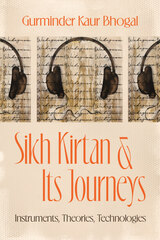 Sikh Kirtan and Its Journeys: Instruments, Theories, Technologies
Gurminder Kaur Bhogal
University of Chicago Press, 2025 An unprecedented portrait of Sikh devotional music demonstrating how musical traditions shift to meet changing needs.
Kirtan—the sung expression of sacred verses—spans the Indian subcontinent, but it plays a unique role in the Sikh faith. In Sikh Kirtan and ItsJourneys, musicologist Gurminder Kaur Bhogal introduces the devotional tradition of kirtan, examining it alongside the writings of holy figures, the Sikh Gurus and Bhagats, and its practice among musicians. The long-established tradition of kirtan originated in a canon of instruments and songs, each of which produces a singular spiritual and worldly effect when kirtan is sung. However, the realities of colonization and migration have necessitated changes to these canonical practices. Bhogal offers a deep exploration of the traditions that gave rise to kirtan and a robust portrait of the many transformations kirtan has undergone, particularly in the wide-ranging Sikh diaspora, dedicating special attention to marginal kirtan players such as women and innovators developing digital techniques and styles. A practicing kirtaniye, Bhogal has spent her life studying and performing this music, steeped in the histories and controversies her book describes.
Through a rigorous explanation of the traditions and evolutions of kirtan, Bhogal ultimately shows that kirtan is fluid, multi-faceted, and ever-changing because it reflects the shifting spiritual needs and musical tastes of devotees and practitioners across the world. Moreover, wherever kirtan is offered and received, it heightens corporeal vibrations between practitioners and devotees to motivate a sense of social purpose, social responsibility, and selfless service.
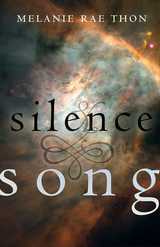 Silence & Song
Melanie Rae Thon
University of Alabama Press, 2015 Immigrants lost in the blistering expanse of the Sonoran Desert, problem bears, bats pollinating saguaros, a Good Samaritan filling tanks at emergency water stations, and the terrified runaway boy who shoots him pierce the heart and mind of Rosana Derais. “Vanishings,” the first story in Silence & Song, is a love letter, a prayer to these strangers whose lives penetrate and transform Rosana’s own sorrow.
In “Translations,” the prose poem connecting the two longer fictions, child refugees at a multilingual literacy center in Salt Lake City discover the merciful “translation” of dance and pantomime.
The convergence of two disparate events—a random murder in Seattle and the nuclear accident at Chernobyl—catalyze the startling, eruptive form of the concluding piece,“requiem: home: and the rain, after.” Narrated in first person by the killer’s sister and plural first person by the “liquidators” who come to the Evacuation Zone to bury entire villages poisoned by radioactive fallout, “requiem” navigates the immediate trauma of murder and environmental disaster; personal and global devastation; and the remarkable recovery of the miraculously diverse more-than-human world.
Silence: A Thirteenth-Century French Romance
Sarah Roche-Mahdi
Michigan State University Press, 2007 This bilingual edition, a parallel text in Old French and English, is based on a reexamination of the Old French manuscript, and makes Silence available to specialists and students in various fields of literature and women's studies.
The Roman de Silence, an Arthurian romance of the thirteenth century, tells of a girl raised as a boy, equally accomplished as a minstrel and knight, whose final task, the capture of Merlin, leads to her unmasking.
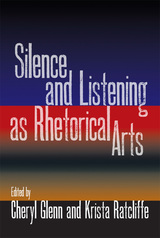 Silence and Listening as Rhetorical Arts
Edited by Cheryl Glenn and Krista Ratcliffe
Southern Illinois University Press, 2011 In Silence and Listening as Rhetorical Arts,editors Cheryl Glenn and Krista Ratcliffe bring together seventeen essays by new and established scholars that demonstrate the value and importance of silence and listening to the study and practice of rhetoric. Building on the editors’ groundbreaking research, which respects the power of the spoken word while challenging the marginalized status of silence and listening, this volumemakes a strong case for placing these overlooked concepts, and their intersections, at the forefront of rhetorical arts within rhetoric and composition studies. Divided into three parts—History, Theory and Criticism, and Praxes—this book reimagines traditional histories and theories of rhetoric and incorporates contemporary interests, such as race, gender, and cross-cultural concerns, into scholarly conversations about rhetorical history, theory, criticism, and praxes. For the editors and the other contributors to this volume, silence is not simply the absence of sound and listening is not a passive act. When used strategically and with purpose—together and separately—silence and listening are powerful rhetorical devices integral to effective communication. The essays cover a wide range of subjects, including women rhetors from ancient Greece and medieval and Renaissance Europe; African philosophy and African American rhetoric; contemporary antiwar protests in the United States; activist conflict resolution in Israel and Palestine; and feminist and second-language pedagogies. Taken together, the essays in this volume advance the argument that silence and listening are as important to rhetoric and composition studies as the more traditionally emphasized arts of reading, writing, and speaking and are particularly effective for theorizing, historicizing, analyzing, and teaching. An extremely valuable resource for instructors and students in rhetoric, composition, and communication studies, Silence and Listening as Rhetorical Arts will also have applications beyond academia, helping individuals, cultural groups, and nations more productively discern and implement appropriate actions when all parties agree to engage in rhetorical situations that include not only respectful speaking, reading, and writing but also productive silence and rhetorical listening.
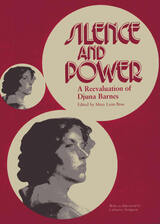 Silence and Power: A Reevaluation of Djuna Barnes
Edited by Mary Lynn Broe. Afterword by Catharine Stimpson
Southern Illinois University Press, 1991 Roughly chronological, these essays explore Barnes’ early work in the New York newspaper world of the ‘teens, proceed through the 1954 publication of The Antiphon, and include several approaches to such works as Ryder, Ladies Almanack, and Nightwood. This judicious mix of essays—many of them illustrated by photographs and drawings—presents a comprehensive picture of the creative imagination of Djuna Barnes. Essayists include Mary Lynn Broe, Nancy J. Levine, Ann Larabee, Joan Retallack, Carolyn Allen, Carolyn Burke, Sheryl Stevenson, Marie Ponsot, Frances M. Doughty, Susan Sniader Lanser, Frann Michel, Karla Jay, Jane Marcus, Judith Lee, Julie L. Abraham, Meryl Altman, Lynda Curry, Louise A. DeSalvo, and Catharine Stimpson. Individuals sharing personal recollections of Barnes are Ruth Ford, James B. Scott, Alex Gildzen, Hank O’Neal, Chester Page, Andrew Field, and Frances McCullough. Janice Thom and Kevin Engel provide an updated bibliography. From The Book of Repulsive Women to The Antiphon, Barnes challenged old gender dichotomies as she shaped radical sociopolitical views. Her textual methods celebrated a multiplicity of voices, heterodox forms, and genres, transgressing those tenets of modernism that privilege the “high art” of a single, unified textual identity or a discrete discourse. These essays offer various critical approaches and sinuous readings of the full range of Barnes’ achievement. Interwoven through the essays and reminiscences is a lively commentary from Barnes’ friends and contemporaries as well as Barnes herself.
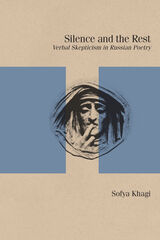 Silence and the Rest: Verbal Skepticism in Russian Poetry
Sofya Khagi
Northwestern University Press, 2013 Scholars have long noted the deeply rooted veneration of the power of the word—both the expressive and communicative capacities of language—in Russian literature and culture. In her ambitious book Silence and the Rest, Sofya Khagi illuminates a consistent counternarrative, showing how, throughout its entire history, Russian poetry can be read as an argument for what she calls “verbal skepticism.” Although she deals with many poets from a two-century tradition, Khagi gives special emphasis to Osip Mandelstam, Joseph Brodsky, and Timur Kibirov, offering readings that add new layers of meaning to their work. She posits a long-running dialogue between the poets and the philosophers and theorists who have also been central to the antiverbal strain of Russian culture. Unlike its Western counterpart, the Russian philosophical and theological doubt of the efficacy of the word still grants the author, and literature itself, an ethical force—the inadequacies of language notwithstanding.
Silence Dressed in Cyrillic Letters
Iya Kiva
Harvard University Press Born out of the pain and loss of a fragmented present, Iya Kiva’s poetry, collected in English translation in Silence Dressed in Cyrillic Letters, stitches memories of the past into Ukraine’s new reality. Since war broke out in her native Donetsk in 2014, she has become a prominent voice of Ukraine’s internally displaced citizens, finding new metaphors to express the ongoing uncertainties of this time. Kiva first began publishing in her native Russian but, since the Donbas war, she has shifted to writing in Ukrainian. Her poems also reflect her mixed Ukrainian, Russian, and Jewish background and contribute to defining contemporary Ukraine—a culturally and linguistically diverse sovereign country. As Ukraine struggles for its existence, Kiva offers lyric poems that acknowledge the deep trauma of war while radiating love and hope.
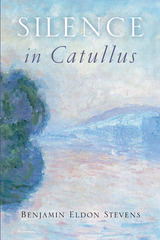 Silence in Catullus
Benjamin Eldon Stevens
University of Wisconsin Press, 2014 Both passionate and artful, learned and bawdy, Catullus is one of the best-known and critically significant poets from classical antiquity. An intriguing aspect of his poetry that has been neglected by scholars is his interest in silence, from the pauses that shape everyday conversation to linguistic taboos and cultural suppressions and the absolute silence of death. In Silence in Catullus, Benjamin Eldon Stevens offers fresh readings of this Roman poet's most important works, focusing on his purposeful evocations of silence. This deep and varied "poetics of silence" takes on many forms in Catullus's poetic corpus: underscoring the lyricism of his poetry; highlighting themes of desire, immortality-in-culture, and decay; accenting its structures and rhythms; and, Stevens suggests, even articulating underlying philosophies. Combining classical philological methods, contemporary approaches to silence in modern literature, and the most recent Catullan scholarship, this imaginative examination of Catullus offers a new interpretation of one of the ancient world's most influential and inimitable voices.
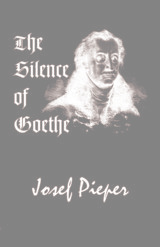 The Silence of Goethe
Josef Pieper
St. Augustine's Press, 2009 During the last months of the war, Josef Pieper saw the realization of a long-cherished plan to escape from the “lethal chaos” that was the Germany of that time, “plucked,” he writes, “as was Habakkuk, by the hair of his head . . . to be planted into a realm of the most peaceful seclusion, whose borders and exists were, of course, controlled by armed sentries.” There he made contact with a friend close-by, who possessed an amazing library, and Pieper hit upon the idea of reading the letters of Goethe from that library. Soon, however, he decided to read the entire Weimar edition of fifty volumes, which were brought to him in sequence, two or three at a time. The richness of this life revealing itself over a period of more than sixty years appeared before my gaze in its truly overpowering magnificence, which almost shattered my powers of comprehension – confined, as they had been, to the most immediate and pressing concerns. What a passionate focus on reality in all its forms, what an undying quest to chase down all that is in the world, what strength to affirm life, what ability to take part in it, what vehemence in the way he showed his dedication to it! Of course, too, what ability to limit himself to what was appropriate; what firm control in inhibiting what was purely aimless; what religious respect for the truth of being! I could not overcome my astonishment; and the prisoner entered a world without borders, a world in which the fact of being in prison was of absolutely no significance.
But no matter how many astonishing things I saw in these unforgettable weeks of undisturbed inner focus, nothing was more surprising or unexpected than this: to realize how much of what was peculiar to this life occurred in carefully preserved seclusion; how much the seemingly communicative man who carried on a world-wide correspondence still never wanted to expose in words the core of his existence. It was precisely in the seclusion, the limitation, the silence of Goethe that made the strongest impact on Pieper. Here was modern Germany’s quintessential conversationalist intellectual, but the strength of his words came from the restraint behind them, even to the point of purposeful forgetting: The culmination is when the eighty-year-old sees forgetting not as a convulsive refusal to think of things, but as what could almost be termed a physiological process of simple forgetting as a function of life. He praises as “a great gift of the gods” . . . “the ethereal stream of forgetfulness” which he “was always able to value, to use, and to heighten.”
However manifold the forms of this silence and of their unconscious roots and conscious motives may have been, is it not always the possibility of hearing, the possibility of a purer perception of reality that is aimed at? And so, is not Goethe’s type of silence above all the silence of one who listens? . . . This listening silence is much deeper than the mere refraining from words and speech in human intercourse. It means a stillness, which, like a breath, has penetrated into the inmost chamber of one’s own soul. It is meant, in the Goethean “maxim,” to “deny myself as much as possible and to take up the object into myself as purely as it is possible to do.” . . .
The meaning of being silent is hearing – a hearing in which the simplicity of the receptive gaze at things is like the naturalness, simplicity, and purity of one receiving a confidence, the reality of which is creatura, God’s creation. And insofar as Goethe’s silence is in this sense a hearing silence, to that extent it has the status of the model and paradigm – however much, in individual instances, reservations and criticism are justified. One could remain circumspectly silent about this exemplariness after the heroic nihilism of our age has proclaimed the attitude of the knower to be by no means that of a silent listener but rather as that of self-affirmation over against being: insight and knowledge are naked defiance, the severest endangering of existence in the midst of the superior strength of concrete being. The resistance of knowledge opposes the oppressive superior power. However, that the knower is not a defiant rebel against concrete being, but above all else a listener who stays silent and, on the basis of his silence, a hearer – it is here that Goethe represents what, since Pythagoras, may be considered the silence tradition of the West. Pieper concludes his remarkable find with this summation: When such talk, which one encounters absolutely everywhere in workshops and in the marketplace – and as a constant temptation – , when such deafening talk, literally out to thwart listening, is linked to hopelessness, we have to ask is there not in silence – listening silence – necessarily a shred of hope? For who could listen in silence to the language of things if he did not expect something to come of such awareness of the truth? And, in a newly founded discipline of silence, is there not a chance not merely to overcome the sterility of everyday talk but also to overcome its brother, hopelessness – possibly if only to the extent that we know the true face of this relationship? I know that here quite different forces come into play which are beyond human control, and perhaps the circulus has to be broken through in a different place. However, one may ask: could not the “quick, strict resolution” to remain silent at the same time serve as a kind of training in hope?
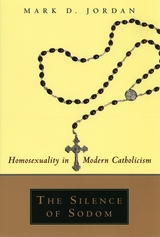 The Silence of Sodom: Homosexuality in Modern Catholicism
Mark D. Jordan
University of Chicago Press, 2000 The past decade has seen homosexual scandals in the Catholic Church becoming ever more visible, and the Vatican's directives on homosexuality becoming ever more forceful, begging the question Mark Jordan tries to answer here: how can the Catholic Church be at once so homophobic and so homoerotic? His analysis is a keen and readable study of the tangled relationship between male homosexuality and modern Catholicism.
"[Jordan] has offered glimpses, anecdotal stories, and scholarly observations that are a whole greater than the sum of its parts. . . . If homosexuality is the guest that refuses to leave the table, Jordan has at least shed light on why that is and in the process made the whole issue, including a conflicted Catholic Church, a little more understandable."—Larry B. Stammer, Los Angeles Times
"[Jordan] knows how to present a case, and with apparently effortless clarity he demonstrates the church's double bind and how it affects Vatican rhetoric, the training of priests, and ecclesiastical protectiveness toward an army of closet cases. . . . [T]his book will interest readers of every faith."—Daniel Blue,
Lambda Book Report
A 2000 Lambda Literary Award Finalist
Silence Of St Thomas
Josef Pieper
St. Augustine's Press, 1999 A single theme runs through the three essays on St. Thomas gather in this book. It is the theme of mystery or, more exactly, the response of the searching human intellect to the fact of mystery. Both the fact and the response are suggested in a short biography of St. Thomas that forms the first essay and are then sketched out in detail by a presentation of the “negative element” in his philosophy. The third essay shows that contemporary Existentialism is in basic agreement with the philosophia perennis on this fundamental element of philosophical thinking.
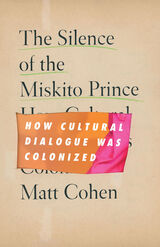 The Silence of the Miskito Prince: How Cultural Dialogue Was Colonized
Matt Cohen
University of Minnesota Press, 2022 Confronting the rifts created by our common conceptual vocabulary for North American colonial studies
How can we tell colonial histories in ways that invite intercultural conversation within humanistic fields that are themselves products of colonial domination? Beginning with a famous episode of failed communication from the narrative of the freed slave Olaudah Equiano, The Silence of the Miskito Prince explores this question by looking critically at five concepts frequently used to imagine solutions to the challenges of cross-cultural communication: understanding, cosmopolitanism, piety, reciprocity, and patience. Focusing on the first two centuries of North American colonization, Matt Cohen traces how these five concepts of cross-cultural relations emerged from, and continue to evolve within, colonial dynamics. Through a series of revealing archival explorations, he argues the need for a new vocabulary for the analysis of past interactions drawn from the intellectual and spiritual domains of the colonized, and for a historiographical practice oriented less toward the illusion of complete understanding and scholarly authority and more toward the beliefs and experiences of descendant communities. The Silence of the Miskito Prince argues for new ways of framing scholarly conversations that use past interactions as a site for thinking about intercultural relations today. By investigating the colonial histories of these terms that were assumed to promote inclusion, Cohen offers both a reflection on how we got here and a model of scholarly humility that holds us to our better or worse pasts.
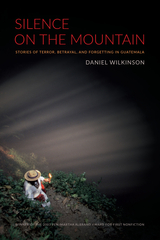 Silence on the Mountain: Stories of Terror, Betrayal, and Forgetting in Guatemala
Daniel Wilkinson
Duke University Press, 2004 new in paperback Silence on the Mountain is a virtuoso work of reporting and a masterfully plotted narrative tracing the history of Guatemala’s thirty-six-year internal war, a conflict that claimed the lives of some 200,000 people, the vast majority of whom died (or were “disappeared”) at the hands of the U.S.-backed military government. Written by Daniel Wilkinson, a young human rights worker, the story begins in 1993, when the author decides to investigate the arson of a coffee plantation’s manor house by a band of guerrillas. The questions surrounding this incident soon broaden into a complex mystery whose solution requires Wilkinson to dig up the largely unwritten history of the country’s recent civil war, following its roots back to a land reform movement that was derailed by a U.S.-sponsored military coup in 1954 and to the origins of a plantation system that put Guatemala’s Mayan Indians to work picking coffee beans for the American and European markets. Decades of terror-inspired fear have led the Guatemalans to adopt a survival strategy of silence so complete that it verges on collective amnesia. The author’s great triumph is that he finds a way for people to tell their stories, and it is through these stories—dramatic, intimate, heartbreaking—that we are shown the anatomy of a thwarted revolution that has relevance not only to Guatemala but also to countless places around the world where terror has been used as a political tool.
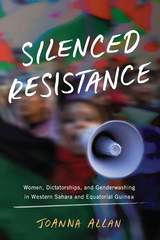 Silenced Resistance: Women, Dictatorships, and Genderwashing in Western Sahara and Equatorial Guinea
Joanna Allan
University of Wisconsin Press, 2021 Spain’s former African colonies—Equatorial Guinea and Western Sahara—share similar histories. Both are under the thumbs of heavy-handed, postcolonial regimes, and are known by human rights organizations as being among the worst places in the world with regard to oppression and lack of civil liberties. Yet the resistance movement in one is dominated by women, the other by men. In this innovative work, Joanna Allan demonstrates why we should foreground gender as key for understanding both authoritarian power projection and resistance. She brings an ethnographic component to a subject that has often been looked at through the lens of literary studies to examine how concerns for equality and women’s rights can be co-opted for authoritarian projects. She reveals how Moroccan and Equatoguinean regimes, in partnership with Western states and corporations, conjure a mirage of promoting equality while simultaneously undermining women’s rights in a bid to cash in on oil, minerals, and other natural resources. This genderwashing, along with historical local, indigenous, and colonially imposed gender norms mixed with Western misconceptions about African and Arab gender roles, plays an integral role in determining the shape and composition of public resistance to authoritarian regimes.
Silenced Voices: The Poetics of Speech in Ovid
Bartolo A. Natoli
University of Wisconsin Press, 2021 Silenced Voices is a pointed examination of the loss of speech, exile from community, and memory throughout the literary corpus of the Roman poet Ovid. In his book-length poem Metamorphoses, characters are transformed in ways that include losing their power of human speech. In Tristia and Epistulae ex Ponto, poems written after Ovid's exile from Rome in 8 ce, he represents himself as also having been transformed, losing his voice.
Bartolo A. Natoli provides a unique cross-reading of these works. He examines how the motifs and ideas articulated in the Metamorphoses provide the template for the poet's representation of his own exile. Ovid depicts his transformation with an eye toward memory, reformulating how his exile would be perceived by his audience. His exilic poems are an attempt to recover the voice he lost and to reconnect with the community of Rome.
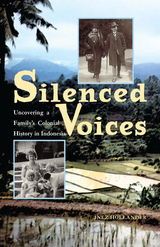 Silenced Voices: Uncovering a Family’s Colonial History in Indonesia
Inez Hollander
Ohio University Press, 2008 Like a number of Netherlanders in the post–World War II era, Inez Hollander only gradually became aware of her family’s connections with its Dutch colonial past, including a Creole great-grandmother. For the most part, such personal stories have been, if not entirely silenced, at least only whispered about in Holland, where society has remained uncomfortable with many aspects of the country’s relationship with its colonial empire.
Unlike the majority of memoirs that are soaked in nostalgia for tempo dulu, Hollander’s story sets out to come to grips with her family’s past by weaving together personal records with historical and literary accounts of the period. She seeks not merely to locate and preserve family memories, but also to test them against a more disinterested historical record. Hers is a complicated and sometimes painful personal journey of realization, unusually mindful of the ways in which past memories and present considerations can be intermingled when we seek to understand a difficult past. Silenced Voices is an important contribution to the literature on how Dutch society has dealt with its recent colonial history.
Silences
Martha Ronk
Omnidawn, 2019 Within the visual arts of painting and photography, Martha Ronk finds an undeniable presence lurking: silence. This character slips into pauses, hides between images, and expertly evades the grasp of language. Ronk shows us that what is hidden just off screen in these images might just be the force that gives them power. The poems in Silences seek possibilities of how to form language from a phenomenon that so earnestly resists it. Rather than coax silence out of hiding, Ronk’s poems respond to its mysterious presence through questions and conjecture.
These poems endeavor to give a much-deserved voice to silence, addressing the power of what is not seen. While silence remains perpetually out of reach, Ronk invites us to follow the language that creeps up to its edges. The poems in this collection form an inquiry that moves through the presence of silence and reveals insights into the character of the visual art in which it lives.
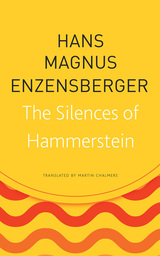 The Silences of Hammerstein
Hans Magnus Enzensberger
Seagull Books, 2009 The Silences of Hammerstein, the latest work from one of Germany’s most significant contemporary authors, engages readers with a blend of a documentary, collage, narration, and fictional interviews. The gripping plot revolves around the experiences of real-life German General Kurt von Hammerstein and his wife and children. A member of an old military family, a brilliant staff officer, and the last commander of the German army before Hitler seized power, Hammerstein, who died in 1943 before Hitler’s defeat, was nevertheless an idiosyncratic character. Too old to be a resister, he retained an independence of mind that was shared by his children: three of his daughters joined the Communist Party, and two of his sons risked their lives in the July 1944 Plot against Hitler and were subsequently on the run till the end of the war. Hammerstein never criticized his children for their activities, and he maintained contacts with the Communists himself and foresaw the disastrous end of Hitler’s dictatorship. In The Silences of Hammerstein, Hans Magnus Enzensberger offers a brilliant and unorthodox account of the military milieu whose acquiescence to Nazism consolidated Hitler’s power and of the heroic few who refused to share in the spoils.
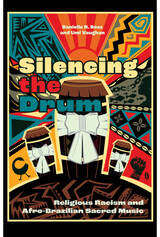 Silencing the Drum: Religious Racism and Afro-Brazilian Sacred Music
Danielle N. Boaz and Umi Vaughan
Amherst College Press, 2024 Silencing the Drum exposes the profound struggle of Afro-Brazilian sacred music against escalating intolerance. Danielle N. Boaz and Umi Vaughan blend legal scholarship with ethnomusicology, offering a compelling narrative rooted in interviews with religious leaders, musicians, and activists across Brazil. This multidisciplinary exploration examines the relentless attacks against the practitioners of Afro-Brazilian religions—from discriminatory noise complaints in Bahia to vigilante violence in Rio de Janeiro. The volume integrates multimedia elements including musical samples to vividly illustrate the struggles and resilience of Afro-Brazilian communities in the face of discrimination. As Silencing the Drum confronts the larger global issues of racism and religious freedom, it provides essential insights for scholars, activists, and anyone passionate about human rights and cultural preservation.
Silencing the Guns in Haiti: The Promise of Deliberative Democracy
Irwin P. Stotzky
University of Chicago Press, 1997 Silencing the Guns in Haiti traces Haiti's halting and uncertain quest for democracy from the perspective of someone who played a leading part in every stage of that process.
"A provocative study of the prospects for the rule of law in Haiti."—Marilyn Bowden, Miami Today
"[Stotzky] deepens insights into the contradictory obstacles to democratic governance in Haiti."—Library Journal
"Controversial and stimulating."—Choice
"Lucid and informative. . . . Stotzky gives readers a good foundation for understanding the pressures facing the impoverished but determined Caribbean island."—Islands
 Silencing the Opposition: Antinuclear Movements and the Media in the Cold War
Andrew Rojecki
University of Illinois Press, 1999 We can trace many important strategic decisions to compelling official fictions such as Kennedy's "missile gap" and Reagan's "window of vulnerability." Over the years, antinuclear movements have had mixed success debunking these fictions, raising public consciousness, and reorienting government policy. Andrew Rojecki explores links between nuclear arms policy and the visibility of opposition groups in the media. He pays particular interest to two cycles of protest: the test ban movement of the Eisenhower and the Kennedy administrations and the Reagan-era nuclear freeze movement. As Rojecki shows, space devoted to the opposition as well as the quality of the coverage varied widely from the first to the second period. The change reflected different climates of public opinion and foreign policy but also a subtle shift in political culture that undermined the legitimacy of citizen protest. As the rationalized policymaking of government agencies, think tanks, and university departments increasingly restricted public debate, the potential for citizens to influence nuclear politics became more circumscribed while nuclear weapons continued to proliferate.
 Silencing the Self: Women and Depression
Dana Crowley Jack
Harvard University Press, 1991 Dana Crowley Jack offers startling new insights into the roots of female depression as she illuminates why women are far more likely than men to suffer major depression in adulthood. Silencing the Self is the first sweeping overview of depression in women that draws on new understandings of the importance of relationships in women’s lives. Attending closely to what depressed women have to say about their lives, Jack reframes major concepts of depression, freeing them from traditional models that have restricted our ability to listen to women’s perspectives on depression.
Jack weaves these voices of depressed women directly into her discussion, providing new meanings to familiar themes: dependence, pleasing, anger, goodness, low self-esteem. These women clearly articulate a no-win, either/or tension in their lives, a tension between sacrificing their own needs in order to preserve a relationship and acting on their needs and feelings at the risk of losing the relationship. Their stories bring to light the “activity required to be passive”—the way women actively silence themselves in order to cultivate and maintain intimate relationships. To accommodate, they learn to censor themselves, to devalue their experience, to repress anger, to be silent. Examining moral themes in depressed women’s narratives, Jack demonstrates how internalized cultural expectations of feminine goodness affect women’s behavior in relationships and precipitate the plunge into depression. In a brilliant synthesis, Jack draws on myth and fairy tale for metaphors to further the understanding of depressed women.
Silencing the Self makes a major contribution to the psychology of women by drawing from the recent literature on women’s relational self and detailing its relevance to female depression. This insightful approach to the dynamic of female depression forges new pathways to self-change, therapy, and research.
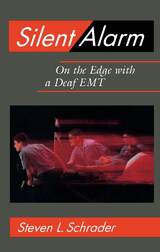 Silent Alarm: On the Edge with a Deaf EMT
Steven L. Schrader
Gallaudet University Press, 1995 For 15 years, Steven Schrader worked as a firefighter and an Emergency Medical Technician (EMT) in Atlanta, Georgia. There, he faced the day-to-day stress created by having to deal with nonstop human catastrophe, one moment administering to terribly hurt accident victims, the next talking down a suicidal person from a rooftop. Added to these difficulties were his own personal struggles, not the least being the bias he experienced because of his severe hearing loss. Silent Alarm presents his no-frills, stunning account of survival in a profession with a notoriously high burn-out rate, and the good that he did as a topnotch EMT.
Schrader makes palpable the constant tension of being the first summoned to life-or-death situations, and he also outlines the grim reality of being an EMT in dangerous parts of the community. “Always wear a bulletproof vest; keep a weapon (out of sight of the supervisors, of course); never, never stand in front of a door when knocking,” are just a few of his rules for the street.
Despite these cautions, time and again he and his partners plunged into danger to save children, elderly citizens, indigents, criminals, and any other persons they found at risk. His hearing loss occasionally hindered him, and sometimes saved him, but, mostly, as it should, it became part of the background to the astonishing compassion in the stories he tells.
 Silent Cells: The Secret Drugging of Captive America
Anthony Ryan Hatch
University of Minnesota Press, 2019 A critical investigation into the use of psychotropic drugs to pacify and control inmates and other captives in the vast U.S. prison, military, and welfare systems For at least four decades, U.S. prisons and jails have aggressively turned to psychotropic drugs—antidepressants, antipsychotics, sedatives, and tranquilizers—to silence inmates, whether or not they have been diagnosed with mental illnesses. In Silent Cells, Anthony Ryan Hatch demonstrates that the pervasive use of psychotropic drugs has not only defined and enabled mass incarceration but has also become central to other forms of captivity, including foster homes, military and immigrant detention centers, and nursing homes. Silent Cells shows how, in shockingly large numbers, federal, state, and local governments and government-authorized private agencies pacify people with drugs, uncovering patterns of institutional violence that threaten basic human and civil rights. Drawing on publicly available records, Hatch unearths the coercive ways that psychotropics serve to manufacture compliance and docility, practices hidden behind layers of state secrecy, medical complicity, and corporate profiteering. Psychotropics, Hatch shows, are integral to “technocorrectional” policies devised to minimize public costs and increase the private profitability of mass captivity while guaranteeing public safety and national security. This broad indictment of psychotropics is therefore animated by a radical counterfactual question: would incarceration on the scale practiced in the United States even be possible without psychotropics?
|
|
